Materials for organic electroluminescent devices
Jatsch , et al.
U.S. patent number 10,227,528 [Application Number 14/654,708] was granted by the patent office on 2019-03-12 for materials for organic electroluminescent devices. This patent grant is currently assigned to Merck Patent GmbH. The grantee listed for this patent is Merck Patent GmbH. Invention is credited to Thomas Eberle, Anja Jatsch, Jonas Valentin Kroeber, Rouven Linge, Amir Hossain Parham, Christof Pflumm, Philipp Stoessel.

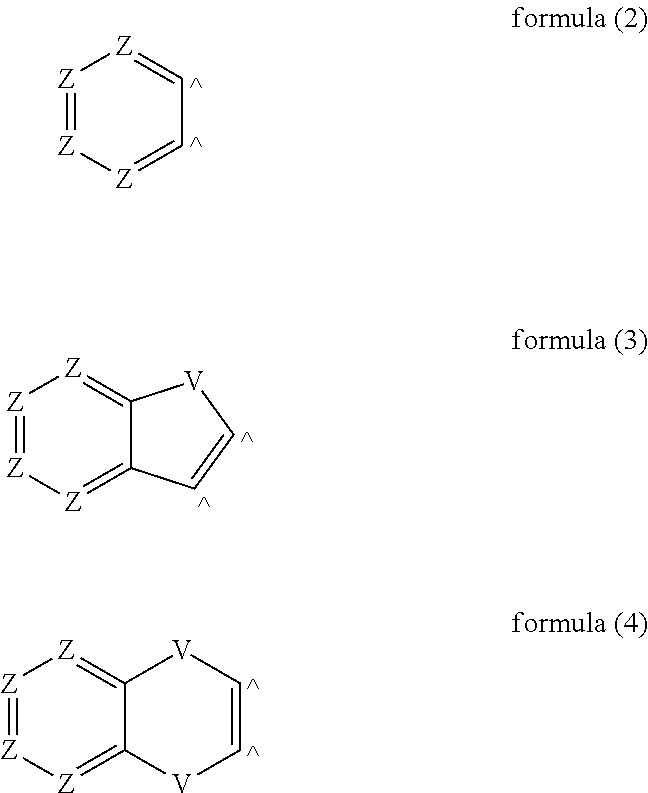

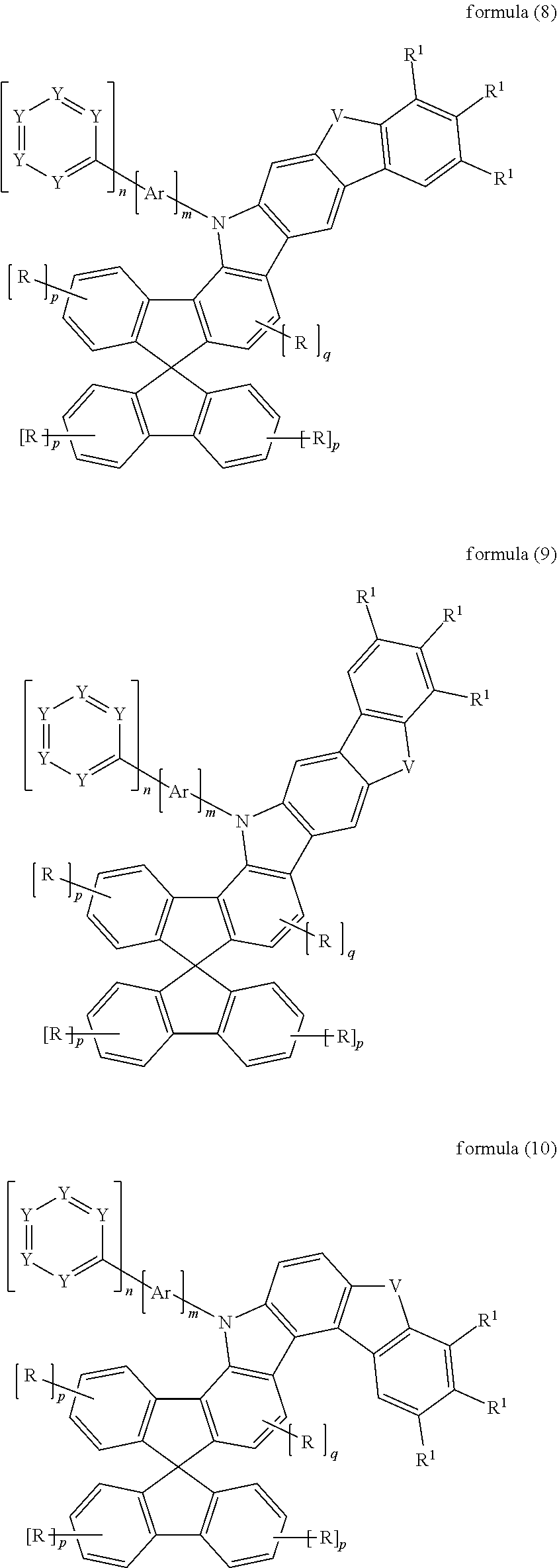








View All Diagrams
| United States Patent | 10,227,528 |
| Jatsch , et al. | March 12, 2019 |
Materials for organic electroluminescent devices
Abstract
The present invention relates to compounds which are suitable for use in electronic devices, and to electronic devices, in particular organic electroluminescent devices, comprising these compounds.
| Inventors: | Jatsch; Anja (Frankfurt Am Main, DE), Pflumm; Christof (Darmstadt, DE), Parham; Amir Hossain (Frankfurt Am Main, DE), Eberle; Thomas (Landau, DE), Stoessel; Philipp (Frankfurt Am Main, DE), Kroeber; Jonas Valentin (Frankfurt Am Main, DE), Linge; Rouven (Darmstadt, DE) | ||||||||||
|---|---|---|---|---|---|---|---|---|---|---|---|
| Applicant: |
|
||||||||||
| Assignee: | Merck Patent GmbH
(DE) |
||||||||||
| Family ID: | 47559037 | ||||||||||
| Appl. No.: | 14/654,708 | ||||||||||
| Filed: | November 27, 2013 | ||||||||||
| PCT Filed: | November 27, 2013 | ||||||||||
| PCT No.: | PCT/EP2013/003583 | ||||||||||
| 371(c)(1),(2),(4) Date: | June 22, 2015 | ||||||||||
| PCT Pub. No.: | WO2014/094963 | ||||||||||
| PCT Pub. Date: | June 26, 2014 |
Prior Publication Data
| Document Identifier | Publication Date | |
|---|---|---|
| US 20150337197 A1 | Nov 26, 2015 | |
Foreign Application Priority Data
| Dec 21, 2012 [EP] | 12008584 | |||
| Current U.S. Class: | 1/1 |
| Current CPC Class: | C07D 209/86 (20130101); C09K 11/025 (20130101); C07D 401/04 (20130101); H01L 51/0072 (20130101); H01L 51/0073 (20130101); C07D 405/10 (20130101); C07D 409/14 (20130101); C07D 495/10 (20130101); C07D 403/10 (20130101); C07D 403/04 (20130101); C09K 11/06 (20130101); C07D 209/96 (20130101); C07D 409/04 (20130101); H01L 51/0067 (20130101); H01L 51/0061 (20130101); H01L 51/0068 (20130101); C07D 491/107 (20130101); H01L 51/0074 (20130101); H01L 51/006 (20130101); H01L 51/0071 (20130101); C07D 401/14 (20130101); C07D 487/10 (20130101); C09K 2211/1059 (20130101); C09K 2211/1092 (20130101); H01L 51/5012 (20130101); C09K 2211/1011 (20130101); H01L 51/5056 (20130101); C09K 2211/1033 (20130101); C09K 2211/1088 (20130101); C09K 2211/1029 (20130101); H01L 51/5096 (20130101); C09K 2211/1044 (20130101); H01L 51/5016 (20130101); H01L 51/5072 (20130101); C09K 2211/1037 (20130101); Y02E 10/549 (20130101); H01L 2251/5384 (20130101); C09K 2211/1007 (20130101) |
| Current International Class: | H01L 51/00 (20060101); C07D 409/04 (20060101); C07D 403/10 (20060101); C07D 401/14 (20060101); C07D 409/14 (20060101); C07D 405/10 (20060101); C07D 487/10 (20060101); C07D 209/86 (20060101); C09K 11/06 (20060101); C09K 11/02 (20060101); C07D 403/04 (20060101); C07D 495/10 (20060101); C07D 491/107 (20060101); C07D 401/04 (20060101); C07D 209/96 (20060101); H01L 51/50 (20060101) |
| Field of Search: | ;428/690,691,917,411.4,336 ;427/58,66 ;313/500-512 ;257/40,88-104,E51,E51.052 ;252/301.16-301.35 |
References Cited [Referenced By]
U.S. Patent Documents
| 9040172 | May 2015 | Parham et al. |
| 2003/0186158 | October 2003 | Yokota |
| 2012/0091446 | April 2012 | Jung et al. |
| 2012/0097899 | April 2012 | Parham et al. |
| 2013/0019024 | January 2013 | Sheth et al. |
| 2013/0256645 | October 2013 | Min |
| 102471602 | May 2012 | CN | |||
| 2012126673 | Jul 2012 | JP | |||
| 2012531383 | Dec 2012 | JP | |||
| 2012531737 | Dec 2012 | JP | |||
| 2014523207 | Sep 2014 | JP | |||
| WO-2011000455 | Jan 2011 | WO | |||
| WO 2011136520 | Nov 2011 | WO | |||
| WO2012074210 | Jun 2012 | WO | |||
| WO-2012074210 | Jun 2012 | WO | |||
Other References
|
International Search Report for PCT/EP2013/003583 dated Jan. 23, 2014. cited by applicant . English Translation of Japanese Office Action for Japanese Application No. 2015-548258, dated Sep. 26, 2017. cited by applicant. |
Primary Examiner: Chriss; Jennifer A
Assistant Examiner: DeGuire; Sean M
Attorney, Agent or Firm: Drinker Biddle & Reath LLP
Claims
The invention claimed is:
1. A compound of the formula (1) or formula (1A), ##STR00417## where the following applies to the symbols and indices used: Y is on each occurrence, identically or differently, CR.sup.1 or N, with the proviso that at least one group Y stands for N; X is on each occurrence, identically or differently, CR.sup.1 or N; or two adjacent X stand for S, O or NR.sup.1, so that a five-membered ring forms; or two adjacent X stand for a group of the following formula (2), (3) or (4), ##STR00418## where ^ indicates the corresponding adjacent groups X in the formula (1); V is on each occurrence, identically or differently, C(R.sup.1).sub.2, NR.sup.1, O, S, BR.sup.1, Si(R.sup.1).sub.2 or C.dbd.O; Z is on each occurrence, identically or differently, CR.sup.1 or N; Ar is on each occurrence, identically or differently, an aromatic or heteroaromatic ring system having 5 to 40 aromatic ring atoms, which is optionally substituted by one or more radicals R.sup.1; R is on each occurrence, identically or differently, H, D, F, Cl, Br, I, CN, N(Ar.sup.1).sub.2, a straight-chain alkyl group having 1 to 40 C atoms or a branched or cyclic alkyl group having 3 to 40 C atoms, each of which is optionally substituted by one or more radicals R.sup.2, where one or more non-adjacent CH.sub.2 groups is optionally replaced by R.sup.2C.dbd.CR.sup.2, C.ident.C or O and where one or more H atoms is optionally replaced by D or F, or an aromatic ring system having 6 to 60 aromatic ring atoms, which is optionally substituted by one or more radicals R.sup.2; wherein the aromatic ring system is selected from benzene, ortho-, meta-para-biphenyl, ortho-, meta-, para- or branched terphenyl, ortho-, meta-, para- or branched quaterphenyl, 1-, 2- or 3-fluorenyl, 1-, 2-, 3- or 4-spirobifluorenyl, 1- or 2-naphthyl, phenanthrene, or combinations of two or three of these groups, each of which may be substituted by one or more radicals R.sup.1; two adjacent substituents R here may form a monocyclic or polycyclic, aliphatic or aromatic ring system, which is optionally substituted by one or more radicals R.sup.2; R.sup.1 is on each occurrence, identically or differently, H, D, F, Cl, Br, I, CN, NO.sub.2, N(Ar.sup.1).sub.2, N(R.sup.2).sub.2, C(.dbd.O)Ar.sup.1, C(.dbd.O)R.sup.2, P(.dbd.O)(Ar.sup.1).sub.2, P(Ar.sup.1).sub.2, B(Ar.sup.1).sub.2, Si(Ar.sup.1).sub.3, Si(R.sup.2).sub.3, a straight-chain alkyl, alkoxy or thioalkyl group having 1 to 40 C atoms or a branched or cyclic alkyl, alkoxy or thioalkyl group having 3 to 40 C atoms or an alkenyl or alkynyl group having 2 to 40 C atoms, each of which is optionally substituted by one or more radicals R.sup.2, where one or more non-adjacent CH.sub.2 groups is optionally replaced by R.sup.2C.dbd.CR.sup.2, C.ident.C, Si(R.sup.2).sub.2, C.dbd.O, C.dbd.S, C.dbd.NR.sup.2, P(.dbd.O)(R.sup.2), SO, SO.sub.2, NR.sup.2, O, S or CONR.sup.2 and where one or more H atoms is optionally replaced by D, F, Cl, Br, I, CN or NO.sub.2, an aromatic or heteroaromatic ring system having 5 to 60 aromatic ring atoms, which may in each case be substituted by one or more radicals R.sup.2, an aryloxy or heteroaryloxy group having 5 to 60 aromatic ring atoms, which is optionally substituted by one or more radicals R.sup.2; two adjacent substituents R.sup.1 here may optionally form a monocyclic or polycyclic, or aliphatic ring system, which is optionally substituted by one or more radicals R.sup.2; Ar.sup.1 is on each occurrence, identically or differently, an aromatic or heteroaromatic ring system having 5-30 aromatic ring atoms, which is optionally substituted by one or more non-aromatic radicals R.sup.2; two radicals Ar.sup.1 here which are bonded to the same N atom or P atom may also be bridged to one another by a single bond or a bridge selected from N(R.sup.2), C(R.sup.2).sub.2, O or S; R.sup.2 is selected on each occurrence, identically or differently, from the group consisting of H, D, F, CN, an aliphatic hydrocarbon radical having 1 to 20 C atoms, or an aromatic or heteroaromatic ring system having 5 to 30 aromatic ring atoms, in which one or more H atoms is optionally replaced by D, F, Cl, Br, I or CN, where two or more adjacent substituents R.sup.2 may form a mono- or polycyclic, aliphatic ring system with one another; m and n are on each occurrence, identically or differently, 0 or 1, with the proviso that m+n.gtoreq.1; p is on each occurrence, identically or differently, 0, 1, 2, 3 or 4; q is 0, 1 or 2.
2. The compound according to claim 1, wherein the X stands, identically or differently on each occurrence, for the CR.sup.1 or the N, where a maximum of one group X per ring stands for the N; or the two adjacent groups X stand for a group of the formula (2) or (3), where the Z stands, identically or differently on each occurrence, for the CR.sup.1 and the V stands, identically or differently on each occurrence, for the NR.sup.1, the C(R.sup.1).sub.2, the O or the S.
3. The compound according to claim 1, wherein the compound is selected from the compounds of the formulae (5) to (12), ##STR00419## ##STR00420## ##STR00421## where the symbols and indices used have the meanings given in claim 1, and the V stands for the NR.sup.1, the C(R.sup.1).sub.2, the O or the S.
4. The compound according to claim 1, wherein the compound is selected from the structures of the formulae (5a) to (12a), ##STR00422## ##STR00423## ##STR00424## where the symbols and indices used have the meanings given in claim 1.
5. The compound according to claim 1, wherein the R is selected, identically or differently on each occurrence, from the group consisting of H, F, CN, N(Ar.sup.1).sub.2, a straight-chain alkyl group having 1 to 10 C atoms or a branched or cyclic alkyl group having 3 to 10 C atoms or an aromatic ring system having 6 to 30 aromatic ring atoms, where the aromatic ring system does not contain heteroaryl groups, which is optionally substituted by one or more non-aromatic radicals R.sup.2, and wherein the aromatic ring system is selected from benzene, ortho-, meta-para-biphenyl, ortho-, meta-, para- or branched terphenyl, ortho-, meta-, para- or branched quaterphenyl, 1-, 2- or 3-fluorenyl, 1-, 2-, 3- or 4-spirobifluorenyl, 1- or 2-naphthyl, phenanthrene, or combinations of two or three of these groups, each of which may be substituted by one or more radicals R.sup.1 and in that the R.sup.1 is selected, identically or differently on each occurrence, from the group consisting of H, D, F, Br, CN, N(Ar.sup.1).sub.2, C(.dbd.O)Ar.sup.1, P(.dbd.O)(Ar.sup.1).sub.2, a straight-chain alkyl or alkoxy group having 1 to 10 C atoms or a branched or cyclic alkyl or alkoxy group having 3 to 10 C atoms or an alkenyl or alkynyl group having 2 to 10 C atoms, each of which is optionally substituted by one or more radicals R.sup.2, where one or more non-adjacent CH.sub.2 groups is optionally replaced by O and where one or more H atoms is optionally replaced by D or F, an aromatic or heteroaromatic ring system having 5 to 30 aromatic ring atoms, which may in each case be substituted by one or more radicals R.sup.2.
6. The compound according to claim 1, wherein the Ar is selected from aromatic or heteroaromatic ring systems having 5 to 24 aromatic ring atoms, which may in each case be substituted by one or more radicals R.sup.1, each of which is optionally substituted by one or more radicals R.sup.1.
7. The compound according to claim 1, wherein the Ar is benzene, ortho-, meta- or para-biphenyl, ortho-, meta-, para- or branched terphenyl, ortho-, meta-, para- or branched quaterphenyl, 1-, 2- or 3-fluorenyl, 1-, 2-, 3- or 4-spirobifluorenyl, 1- or 2-naphthyl, pyrrole, furan, thiophene, indole, benzofuran, benzothiophene, 1-, 2- or 3-carbazole, 1-, 2- or 3-dibenzofuran, 1-, 2- or 3-dibenzothiophene, indenocarbazole, indolocarbazole, 2-, 3- or 4-pyridine, 2-, 4- or 5-pyrimidine, pyrazine, pyridazine, triazine, anthracene, phenanthrene, triphenylene, pyrene, benzanthracene, or combinations of two or three of these groups, each of which is optionally substituted by one or more radicals R.sup.1.
8. The compound according to claim 1, wherein, in the group of the following formula (Het-Ar), ##STR00425## which is present in the compound according to claim 1 for n=1 and which is bonded to the Ar or, for m=0, to the nitrogen, at least one group Y and a maximum of three groups Y stand for N and the other groups Y stand for CR.sup.1.
9. The compound according to claim 8, wherein the group (Het-Ar) is selected from the groups of the formulae (Het-Ar-1) to (Het-Ar-10), ##STR00426## wherein the dashed bond represents the bond to the Ar or, for m=0, the bond to the nitrogen, and R.sup.1 is on each occurrence, identically or differently, H, D, F, Cl, Br, I, CN, NO.sub.2, N(Ar.sup.1).sub.2, N(R.sup.2).sub.2, C(.dbd.O)Ar.sup.1, C(.dbd.O)R.sup.2, P(.dbd.O)(Ar.sup.1).sub.2, P(Ar.sup.1).sub.2, B(Ar.sup.1).sub.2, Si(Ar.sup.1).sub.3, Si(R.sup.2).sub.3, a straight-chain alkyl, alkoxy or thioalkyl group having 1 to 40 C atoms or a branched or cyclic alkyl, alkoxy or thioalkyl group having 3 to 40 C atoms or an alkenyl or alkynyl group having 2 to 40 C atoms, each of which is optionally substituted by one or more radicals R.sup.2, where one or more non-adjacent CH.sub.2 groups is optionally replaced by R.sup.2C.dbd.CR.sup.2, C.ident.C, Si(R.sup.2).sub.2, C.dbd.O, C.dbd.S, C.dbd.NR.sup.2, P(.dbd.O)(R.sup.2), SO, SO.sub.2, NR.sup.2, O, S or CONR.sup.2 and where one or more H atoms is optionally replaced by D, F, Cl, Br, I, CN or NO.sub.2, an aromatic or heteroaromatic ring system having 5 to 60 aromatic ring atoms, which may in each case be substituted by one or more radicals R.sup.2, an aryloxy or heteroaryloxy group having 5 to 60 aromatic ring atoms, which is optionally substituted by one or more radicals R.sup.2; two adjacent substituents R.sup.1 here may optionally form a monocyclic or polycyclic, aliphatic, aromatic or heteroaromatic ring system, which is optionally substituted by one or more radicals R.sup.2; Ar.sup.1 is on each occurrence, identically or differently, an aromatic or heteroaromatic ring system having 5-30 aromatic ring atoms, which is optionally substituted by one or more non-aromatic radicals R.sup.2; two radicals Ar.sup.1 here which are bonded to the same N atom or P atom may also be bridged to one another by a single bond or a bridge selected from N(R.sup.2), C(R.sup.2).sub.2, O or S; R.sup.2 is selected on each occurrence, identically or differently, from the group consisting of H, D, F, CN, an aliphatic hydrocarbon radical having 1 to 20 C atoms, or an aromatic or heteroaromatic ring system having 5 to 30 aromatic ring atoms, in which one or more H atoms is optionally replaced by D, F, Cl, Br, I or CN, where two or more adjacent substituents R.sup.2 may form a mono- or polycyclic, aliphatic ring system with one another.
10. The compound according to claim 1, wherein the compound contains no condensed aryl or heteroaryl groups in which more than two six-membered rings are condensed directly onto one another.
11. A process for the preparation of the compound according to claim 1, comprising the reaction steps: a) synthesis of the skeleton of compound (1) or (1A) which as yet contains no group (Het-Ar) and/or Ar; and b) reacting the skeleton from a) in a C--C coupling or C--N coupling.
12. The process as claimed in claim 1, wherein the C--C coupling is Suzuki, Negishi, Yamamoto, Grignard-Cross or Stille coupling, or the C--N coupling is Buchwald or Ullmann coupling.
13. An oligomer, polymer or dendrimer containing one or more of the compounds according to claim 1, where one or more bonds from the compound to the polymer, oligomer or dendrimer are present instead of substituents at one or more positions.
14. A formulation comprising at least one of the compound according to claim 1 and at least one solvent.
15. A formulation comprising the oligomer, polymer or dendrimer according to claim 13 and at least one solvent.
16. An electronic device comprising at least one of the compound according to claim 1.
17. An electronic device comprising the oligomer, polymer or dendrimer according to claim 11.
18. The electronic device as claimed in claim 17 wherein the device is selected from the group consisting of an organic electroluminescent device, an organic integrated circuit, an organic field-effect transistor, an organic thin-film transistor, an organic light-emitting transistor, an organic solar cell, a dye-sensitised organic solar cell, an organic optical detector, an organic photoreceptor, an organic field-quench device, a light-emitting electrochemical cell, an organic laser diode and an organic plasmon emitting device.
19. An organic electroluminescent device which comprises the compound according to claim 1 is employed as matrix material for phosphorescent or fluorescent emitters and/or in an electron-blocking or exciton-blocking layer and/or in a hole-transport layer and/or in a hole-blocking layer and/or in a hole-blocking or electron-transport layer.
Description
CROSS-REFERENCE TO RELATED APPLICATIONS
This application is a national stage application (under 35 U.S.C. .sctn. 371) of PCT/EP2013/003583, filed Nov. 27, 2013, which claims benefit of European Application No. 12008584.0, filed Dec. 21, 2012, both of which are incorporated herein by reference in their entirety.
The present invention relates to materials for use in electronic devices, in particular in organic electroluminescent devices, and to electronic devices, in particular organic electroluminescent devices, comprising these materials.
The structure of organic electroluminescent devices (OLEDs) in which organic semiconductors are employed as functional materials is described, for example, in U.S. Pat. No. 4,539,507, U.S. Pat. No. 5,151,629, EP 0676461 and WO 98/27136. The emitting materials employed here are increasingly organometallic complexes which exhibit phosphorescence instead of fluorescence. For quantum-mechanical reasons, an up to four-fold increase in the energy and power efficiency is possible using organometallic compounds as phosphorescence emitters. In general, however, there is still a need for improvement in the case of OLEDs, in particular also in the case of OLEDs which exhibit triplet emission (phosphorescence), for example with respect to efficiency, operating voltage and lifetime.
The properties of phosphorescent OLEDs are not only determined by the triplet emitters employed. In particular, the other materials used, such as matrix materials, hole-blocking materials, electron-transport materials, hole-transport materials and electron- or exciton-blocking materials, are also of particular importance here. Improvements in these materials can thus also result in significant improvements in the OLED properties.
In accordance with the prior art, indolocarbazole derivatives, for example in accordance with WO 2007/063754 or WO 2008/056746, indenocarbazole derivatives, for example in accordance with WO 2010/136109, or fluorene or spirobifluorene derivatives, for example in accordance with WO 2012/074210, inter alia, are employed as matrix materials for phosphorescent emitters in organic electroluminescent devices. Further improvements are desirable here, in particular with respect to the efficiency, the lifetime and the thermal stability of the materials.
The object of the present invention is the provision of compounds which are suitable for use in an OLED, in particular as matrix material for phosphorescent emitters, but also as hole-blocking material, as electron-transport material or optionally as hole-transport and/or electron-blocking material. A further object of the present invention is to provide further organic semiconductors for organic electroluminescent devices so as to provide the person skilled in the art with a greater possible choice of materials for the production of OLEDs.
Surprisingly, it has been found that certain compounds described in greater detail below achieve this object, are highly suitable for use in OLEDs and result in improvements in the organic electroluminescent device. The improvements here relate, in particular, to the lifetime and/or the operating voltage. The present invention therefore relates to these compounds and to electronic devices, in particular organic electroluminescent devices, which comprise compounds of this type.
The present invention relates to a compound of the formula (1) or formula (1A),
##STR00001## where the following applies to the symbols and indices used: Y is on each occurrence, identically or differently, CR.sup.1 or N, with the proviso that at least one group Y stands for N; X is on each occurrence, identically or differently, CR.sup.1 or N; or two adjacent X stand for S, O or NR.sup.1, so that a five-membered ring forms; or two adjacent X stand for a group of the following formula (2), (3) or (4),
##STR00002## where ^ indicates the corresponding adjacent groups X in the formula (1); V is on each occurrence, identically or differently, C(R.sup.1).sub.2, NR.sup.1, O, S, BR.sup.1, Si(R.sup.1).sub.2 or C.dbd.O; Z is on each occurrence, identically or differently, CR.sup.1 or N; Ar is on each occurrence, identically or differently, an aromatic or heteroaromatic ring system having 5 to 40 aromatic ring atoms, which may be substituted by one or more radicals R.sup.1; R is selected on each occurrence, identically or differently, from the group consisting of H, D, F, Cl, Br, I, CN, N(Ar.sup.1).sub.2, a straight-chain alkyl group having 1 to 40 C atoms or a branched or cyclic alkyl group having 3 to 40 C atoms, each of which may be substituted by one or more radicals R.sup.2, where one or more non-adjacent CH.sub.2 groups may be replaced by R.sup.2C.dbd.CR.sup.2, C.ident.C or O and where one or more H atoms may be replaced by D or F, or an aromatic ring system having 6 to 60 aromatic ring atoms, which may be substituted by one or more radicals R.sup.2; two adjacent substituents R here may form a monocyclic or polycyclic, aliphatic or aromatic ring system, which may be substituted by one or more radicals R.sup.2; R.sup.1 is selected on each occurrence, identically or differently, from the group consisting of H, D, F, Cl, Br, I, CN, NO.sub.2, N(Ar.sup.1).sub.2, N(R.sup.2).sub.2, C(.dbd.O)Ar.sup.1, C(.dbd.O)R.sup.2, P(.dbd.O)(Ar.sup.1).sub.2, P(Ar.sup.1).sub.2, B(Ar.sup.1).sub.2, Si(Ar.sup.1).sub.3, Si(R.sup.2).sub.3, a straight-chain alkyl, alkoxy or thioalkyl group having 1 to 40 C atoms or a branched or cyclic alkyl, alkoxy or thioalkyl group having 3 to 40 C atoms or an alkenyl or alkynyl group having 2 to 40 C atoms, each of which may be substituted by one or more radicals R.sup.2, where one or more non-adjacent CH.sub.2 groups may be replaced by R.sup.2C.dbd.CR.sup.2, C.ident.C, Si(R.sup.2).sub.2, C.dbd.O, C.dbd.S, C.dbd.NR.sup.2, P(.dbd.O)(R.sup.2), SO, SO.sub.2, NR.sup.2, O, S or CONR.sup.2 and where one or more H atoms may be replaced by D, F, Cl, Br, I, CN or NO.sub.2, an aromatic or heteroaromatic ring system having 5 to 60 aromatic ring atoms, which may in each case be substituted by one or more radicals R.sup.2, an aryloxy or heteroaryloxy group having 5 to 60 aromatic ring atoms, which may be substituted by one or more radicals R.sup.2; two adjacent substituents R.sup.1 here may optionally form a monocyclic or polycyclic, aliphatic, aromatic or heteroaromatic ring system, which may be substituted by one or more radicals R.sup.2; Ar.sup.1 is on each occurrence, identically or differently, an aromatic or heteroaromatic ring system having 5-30 aromatic ring atoms, which may be substituted by one or more non-aromatic radicals R.sup.2; two radicals Ar.sup.1 here which are bonded to the same N atom or P atom may also be bridged to one another by a single bond or a bridge selected from N(R.sup.2), C(R.sup.2).sub.2, O or S; R.sup.2 is selected on each occurrence, identically or differently, from the group consisting of H, D, F, CN, an aliphatic hydrocarbon radical having 1 to 20 C atoms, or an aromatic or heteroaromatic ring system having 5 to 30 aromatic ring atoms, in which one or more H atoms may be replaced by D, F, Cl, Br, I or CN, where two or more adjacent substituents R.sup.2 may form a mono- or polycyclic, aliphatic ring system with one another; m, n are on each occurrence, identically or differently, 0 or 1, with the proviso that m+n.gtoreq.1; p is on each occurrence, identically or differently, 0, 1, 2, 3 or 4; q is 0, 1 or 2.
An aryl group in the sense of this invention contains 6 to 60 C atoms; a heteroaryl group in the sense of this invention contains 2 to 60 C atoms and at least one heteroatom, with the proviso that the sum of C atoms and heteroatoms is at least 5. The heteroatoms are preferably selected from N, O and/or S. An aryl group or heteroaryl group here is taken to mean either a simple aromatic ring, i.e. benzene, or a simple heteroaromatic ring, for example pyridine, pyrimidine, thiophene, etc., or a condensed (anellated) aryl or heteroaryl group, for example naphthalene, anthracene, phenanthrene, quinoline, isoquinoline, etc. Aromatic groups which are linked to one another by a single bond, such as, for example, biphenyl, are, by contrast, not referred to as aryl or heteroaryl group, but instead as aromatic ring system.
An aromatic ring system in the sense of this invention contains 6 to 60 C atoms in the ring system. A heteroaromatic ring system in the sense of this invention contains 2 to 60 C atoms and at least one heteroatom in the ring system, with the proviso that the sum of C atoms and heteroatoms is at least 5. The heteroatoms are preferably selected from N, O and/or S. For the purposes of this invention, an aromatic or heteroaromatic ring system is intended to be taken to mean a system which does not necessarily contain only aryl or heteroaryl groups, but instead in which, in addition, a plurality of aryl or heteroaryl groups may be connected by a non-aromatic unit, such as, for example, a C, N or O atom. Thus, for example, systems such as fluorene, 9,9'-spirobifluorene, 9,9-diarylfluorene, triarylamine, diaryl ether, stilbene, etc., are also intended to be taken to be aromatic ring systems for the purposes of this invention, as are systems in which two or more aryl groups are connected, for example, by a short alkyl group.
For the purposes of the present invention, an aliphatic hydrocarbon radical or an alkyl group or an alkenyl or alkynyl group, which may contain 1 to 40 C atoms and in which, in addition, individual H atoms or CH.sub.2 groups may be substituted by the above-mentioned groups, is preferably taken to mean the radicals methyl, ethyl, n-propyl, i-propyl, n-butyl, i-butyl, s-butyl, t-butyl, 2-methylbutyl, n-pentyl, s-pentyl, neopentyl, cyclopentyl, n-hexyl, neohexyl, cyclohexyl, n-heptyl, cycloheptyl, n-octyl, cyclooctyl, 2-ethylhexyl, trifluoromethyl, pentafluoroethyl, 2,2,2-trifluoroethyl, ethenyl, propenyl, butenyl, pentenyl, cyclopentenyl, hexenyl, cyclohexenyl, heptenyl, cycloheptenyl, octenyl, cyclooctenyl, ethynyl, propynyl, butynyl, pentynyl, hexynyl, heptynyl or octynyl. An alkoxy group having 1 to 40 C atoms is preferably taken to mean methoxy, trifluoromethoxy, ethoxy, n-propoxy, i-propoxy, n-butoxy, i-butoxy, s-butoxy, t-butoxy, n-pentoxy, s-pentoxy, 2-methylbutoxy, n-hexoxy, cyclohexyloxy, n-heptoxy, cycloheptyloxy, n-octyloxy, cyclooctyloxy, 2-ethylhexyloxy, pentafluoroethoxy and 2,2,2-trifluoroethoxy. A thioalkyl group having 1 to 40 C atoms is taken to mean, in particular, methylthio, ethylthio, n-propylthio, i-propylthio, n-butylthio, i-butylthio, s-butylthio, t-butylthio, n-pentylthio, s-pentylthio, n-hexylthio, cyclohexylthio, n-heptylthio, cycloheptylthio, n-octylthio, cyclooctylthio, 2-ethylhexylthio, trifluoromethylthio, pentafluoroethylthio, 2,2,2-trifluoroethylthio, ethenylthio, propenylthio, butenylthio, pentenylthio, cyclopentenylthio, hexenylthio, cyclohexenylthio, heptenylthio, cycloheptenylthio, octenylthio, cyclooctenylthio, ethynylthio, propynylthio, butynylthio, pentynylthio, hexynylthio, heptynylthio or octynylthio. In general, alkyl, alkoxy or thioalkyl groups in accordance with the present invention may be straight-chain, branched or cyclic, where one or more non-adjacent CH.sub.2 groups may be replaced by the above-mentioned groups; furthermore, one or more H atoms may also be replaced by D, F, Cl, Br, I, CN or NO.sub.2, preferably F, Cl or CN, further preferably F or CN, particularly preferably CN.
An aromatic or heteroaromatic ring system having 5-60 aromatic ring atoms, which may also in each case be substituted by the above-mentioned radicals R.sup.2 or a hydrocarbon radical and which may be linked via any desired positions on the aromatic or heteroaromatic ring system, is taken to mean, in particular, groups derived from benzene, naphthalene, anthracene, benzanthracene, phenanthrene, pyrene, chrysene, perylene, fluoranthene, naphthacene, pentacene, benzopyrene, biphenyl, biphenylene, terphenyl, triphenylene, fluorene, spirobifluorene, dihydrophenanthrene, dihydropyrene, tetrahydropyrene, cis- or trans-indenofluorene, cis- or trans-indenocarbazole, cis- or trans-indolocarbazole, truxene, isotruxene, spirotruxene, spiroisotruxene, furan, benzofuran, isobenzofuran, dibenzofuran, thiophene, benzothiophene, isobenzothiophene, dibenzothiophene, pyrrole, indole, isoindole, carbazole, pyridine, quinoline, isoquinoline, acridine, phenanthridine, benzo-5,6-quinoline, benzo-6,7-quinoline, benzo-7,8-quinoline, phenothiazine, phenoxazine, pyrazole, indazole, imidazole, benzimidazole, naphthimidazole, phenanthrimidazole, pyridimidazole, pyrazinimidazole, quinoxalinimidazole, oxazole, benzoxazole, naphthoxazole, anthroxazole, phenanthroxazole, isoxazole, 1,2-thiazole, 1,3-thiazole, benzothiazole, pyridazine, hexaazatriphenylene, benzopyridazine, pyrimidine, benzopyrimidine, quinoxaline, 1,5-diazaanthracene, 2,7-diazapyrene, 2,3-diazapyrene, 1,6-diazapyrene, 1,8-diazapyrene, 4,5-diazapyrene, 4,5,9,10-tetraazaperylene, pyrazine, phenazine, phenoxazine, phenothiazine, fluorubin, naphthyridine, azacarbazole, benzocarboline, phenanthroline, 1,2,3-triazole, 1,2,4-triazole, benzotriazole, 1,2,3-oxadiazole, 1,2,4-oxadiazole, 1,2,5-oxadiazole, 1,3,4-oxadiazole, 1,2,3-thiadiazole, 1,2,4-thiadiazole, 1,2,5-thiadiazole, 1,3,4-thiadiazole, 1,3,5-triazine, 1,2,4-triazine, 1,2,3-triazine, tetrazole, 1,2,4,5-tetrazine, 1,2,3,4-tetrazine, 1,2,3,5-tetrazine, purine, pteridine, indolizine and benzothiadiazole or groups derived from a combination of these systems.
Adjacent radicals or adjacent substituents in the sense of the present application are taken to mean substituents which are bonded to C atoms which are in turn bonded directly to one another or substituents which are bonded to the same C atom.
In a preferred embodiment of the invention, X stands, identically or differently on each occurrence, for CR.sup.1 or N, where a maximum of one group X per ring stands for N; or two adjacent groups X stand for a group of the formula (2) or (3), in particular formula (3), where Z stands, identically or differently on each occurrence, for CR.sup.1 and V stands, identically or differently on each occurrence, for NR.sup.1, C(R.sup.1).sub.2, O or S. Furthermore preferably, adjacent radicals R.sup.1 which are present on X do not form a ring with one another. Particularly preferably, X stands, identically or differently on each occurrence, for CR.sup.1.
Preferred embodiments of the compounds of the formula (1) are the compounds of the following formulae (5) to (11) and preferred embodiments of the compounds of the formula (1A) are the compounds of the following formula (12),
##STR00003## ##STR00004## ##STR00005## where the symbols and indices used have the meanings given above. V here preferably stands for NR.sup.1, C(R.sup.1).sub.2, O or S. It may be preferred if, for V.dbd.C(R.sup.1).sub.2, the two radicals R.sup.1 form a ring with one another and thus form a spiro system.
In a preferred embodiment of the invention, p is on each occurrence, identically or differently, 0, 1 or 2, particularly preferably 0 or 1 and very particularly preferably equal to 0.
Furthermore preferably, q is equal to 0 or 1, particularly preferably equal to 0.
Particularly preferred embodiments of the structures of the formulae (5) to (12) are the structures of the formulae (5a) to (12a),
##STR00006## ##STR00007## ##STR00008## where the symbols and indices used have the meanings given above.
In a preferred embodiment of the invention, R is selected, identically or differently on each occurrence, from the group consisting of H, F, CN, N(Ar.sup.1).sub.2, a straight-chain alkyl group having 1 to 10 C atoms or a branched or cyclic alkyl group having 3 to 10 C atoms or an aromatic ring system having 6 to 30 aromatic ring atoms, which may be substituted by one or more non-aromatic radicals R.sup.2. In a particularly preferred embodiment of the invention, R is selected, identically or differently on each occurrence, from the group consisting of H, a straight-chain alkyl group having 1 to 4 C atoms or a branched or cyclic alkyl group having 3 to 8 C atoms, in particular is H. If the compound according to the invention is employed as monomer for the production of a polymer, it may also be preferred for two substituents R to stand for Br or I and for the polymerisation to be carried out via these groups.
In a further preferred embodiment of the invention, R.sup.1 is selected, identically or differently on each occurrence, from the group consisting of H, D, F, Br, CN, N(Ar.sup.1).sub.2, C(.dbd.O)Ar.sup.1, P(.dbd.O)(Ar.sup.1).sub.2, a straight-chain alkyl or alkoxy group having 1 to 10 C atoms or a branched or cyclic alkyl or alkoxy group having 3 to 10 C atoms or an alkenyl or alkynyl group having 2 to 10 C atoms, each of which may be substituted by one or more radicals R.sup.2, where one or more non-adjacent CH.sub.2 groups may be replaced by O and where one or more H atoms may be replaced by D or F, an aromatic or heteroaromatic ring system having 5 to 30 aromatic ring atoms, which may in each case be substituted by one or more radicals R.sup.2. R.sup.1 is particularly preferably selected, identically or differently on each occurrence, from the group consisting of H, N(Ar.sup.1).sub.2, a straight-chain alkyl group having 1 to 4 C atoms or a branched or cyclic alkyl group having 3 to 8 C atoms, each of which may be substituted by one or more radicals R.sup.2, or an aromatic or heteroaromatic ring system having 5 to 18 aromatic ring atoms, which may in each case be substituted by one or more radicals R.sup.2.
If R stands for an aromatic ring system or if R.sup.1 stands for an aromatic or heteroaromatic ring system, this R or R.sup.1 is then preferably selected, identically or differently on each occurrence, from the same groups as indicated below as suitable groups for Ar.
In compounds which are processed by vacuum evaporation, the alkyl groups preferably have not more than five C atoms, particularly preferably not more than 4 C atoms, very particularly preferably not more than 1 C atom. For compounds which are processed from solution, suitable compounds are also those which are substituted by alkyl groups, in particular branched alkyl groups, having up to 10 C atoms or which are substituted by oligoarylene groups, for example ortho-, meta-, para- or branched terphenyl or quaterphenyl groups.
In a preferred embodiment of the invention, n=1 and m=0. In a further preferred embodiment of the invention, n=0 and m=1. In still a further preferred embodiment of the invention, n=m=1.
Preferred groups Ar are aromatic or heteroaromatic ring systems having 5 to 24 aromatic ring atoms, which may in each case be substituted by one or more radicals R.sup.1. Suitable groups Ar are selected from benzene, ortho-, meta- or para-biphenyl, ortho-, meta-, para- or branched terphenyl, ortho-, meta-, para- or branched quaterphenyl, 1-, 2- or 3-fluorenyl, 1-, 2-, 3- or 4-spirobifluorenyl, 1- or 2-naphthyl, pyrrole, furan, thiophene, indole, benzofuran, benzothiophene, 1-, 2- or 3-carbazole, 1-, 2- or 3-dibenzofuran, 1-, 2- or 3-dibenzothiophene, indenocarbazole, indolocarbazole, 2-, 3- or 4-pyridine, 2-, 4- or 5-pyrimidine, pyrazine, pyridazine, triazine, anthracene, phenanthrene, triphenylene, pyrene, benzanthracene, or combinations of two or three of these groups, each of which may be substituted by one or more radicals R.sup.1. Ar particularly preferably stands for an aromatic ring system, in particular selected from the group consisting of benzene, ortho-, meta- or para-biphenyl, ortho-, meta-, para- or branched terphenyl and ortho-, meta-, para- or branched quaterphenyl. If a group (Het-Ar), as described in greater detail below, is also bonded to the group Ar, i.e. if n=m=1, the group (Het-Ar) is then bonded to Ar at any desired site.
In a preferred embodiment of the invention, Ar is an aromatic ring system, i.e. contains no heteroaryl groups. This applies both if n=1 and a group (Het-Ar), as described below, is also bonded to Ar and also for n=0.
In a further preferred embodiment of the invention, the aromatic groups in the group Ar, if Ar contains more than one aryl group, are not para-linked, i.e. they are preferably not para-biphenyl, para-terphenyl or para-quarterphenyl, but instead, for example, the respective ortho- or meta-linked structures.
It is furthermore preferred, if Ar contains a carbazole, pyrrole, imidazole or benzimidazole group, for this group not to be linked via a nitrogen atom, but instead via a carbon atom to the other aromatic units of Ar or to the nitrogen atom.
For n=1, the compound according to the invention contains a heteroaryl group of the following formula, which is abbreviated to (Het-Ar) below:
##STR00009##
For n=1, this group is present in the compound according to the invention and is bonded to Ar for m=1 or to the nitrogen for m=0. At least one group Y and preferably a maximum of three groups Y in the group (Het-Ar) stand for N and the other groups Y stand for CR.sup.1.
Preferred embodiments are the groups of the following formulae (Het-Ar-1) to (Het-Ar-10),
##STR00010## where the dashed bond represents the bond to Ar or, for m=0, the bond to the nitrogen, and the symbols used have the meanings given above.
Particular preference is given to the groups of the following formulae (Het-Ar-1a) to (Het-Ar-10b),
##STR00011## where the dashed bond represents the bond to Ar or, for m=0, the bond to the nitrogen, and the symbols used have the meanings given above.
If (Het-Ar) stands for a group (Het-Ar-1) or (Het-Ar-1a), the two substituents R.sup.1 in this group then preferably stand for an aromatic or heteroaromatic ring system having 5 to 24 aromatic ring atoms, which may be substituted by one or more radicals R.sup.2, in particular for phenyl, ortho-, meta- or para-biphenyl, ortho-, meta-, para- or branched terphenyl, ortho-, meta-, para- or branched quaterphenyl, 1-, 2-, 3- or 4-fluorene, 1-, 2-, 3- or 4-spirobifluorene, 1-, 2-, 3- or 4-dibenzofuran or 1-, 2-, 3- or 4-carbazole.
If (Het-Ar) stands for a group (Het-Ar-2) to (Het-Ar-10) or (Het-Ar-2a) to (Het-Ar-10a), R.sup.1 in these groups then preferably stands, identically or differently on each occurrence, for H, D or an aromatic or heteroaromatic ring system having 5 to 24 aromatic ring atoms, which may be substituted by one or more radicals R.sup.2, in particular for H or phenyl, ortho-, meta- or para-biphenyl, ortho-, meta-, para- or branched terphenyl or ortho-, meta-, para- or branched quaterphenyl.
The preferred embodiments mentioned above can be combined with one another as desired. In a particularly preferred embodiment of the invention, the preferences mentioned above occur simultaneously.
If the compounds of the formula (1) or the preferred embodiments are used as matrix material for a phosphorescent emitter or in a layer which is directly adjacent to a phosphorescent layer, it is furthermore preferred for the compound to contain no condensed aryl or heteroaryl groups in which more than two six-membered rings are condensed directly onto one another. In particular, it is preferred for the radicals R, R.sup.1, R.sup.2 and Ar to contain no condensed aryl or heteroaryl group in which two or more six-membered rings are condensed directly onto one another and for two adjacent groups X not to stand for a group of the formula (2).
Examples of preferred compounds in accordance with the embodiments indicated above are the compounds shown in the following table.
TABLE-US-00001 ##STR00012## ##STR00013## ##STR00014## ##STR00015## ##STR00016## ##STR00017## ##STR00018## ##STR00019## ##STR00020## ##STR00021## ##STR00022## ##STR00023## ##STR00024## ##STR00025## ##STR00026## ##STR00027## ##STR00028## ##STR00029## ##STR00030## ##STR00031## ##STR00032## ##STR00033## ##STR00034## ##STR00035## ##STR00036## ##STR00037## ##STR00038## ##STR00039## ##STR00040## ##STR00041## ##STR00042## ##STR00043## ##STR00044## ##STR00045## ##STR00046## ##STR00047## ##STR00048## ##STR00049## ##STR00050## ##STR00051## ##STR00052## ##STR00053## ##STR00054## ##STR00055## ##STR00056## ##STR00057## ##STR00058## ##STR00059## ##STR00060## ##STR00061## ##STR00062## ##STR00063## ##STR00064## ##STR00065## ##STR00066## ##STR00067## ##STR00068## ##STR00069## ##STR00070## ##STR00071## ##STR00072## ##STR00073## ##STR00074## ##STR00075## ##STR00076## ##STR00077## ##STR00078## ##STR00079## ##STR00080## ##STR00081## ##STR00082## ##STR00083## ##STR00084##
The basic structure of the compounds according to the invention can be prepared by the route outlined in Scheme 1. The functionalisation can be carried out in accordance with Scheme 2.
##STR00085##
##STR00086##
The synthesis here is usually carried out starting from literature-known 4-bromospirobifluorene (Organic Letters 2009, 11(12), 2607-2610) or a correspondingly substituted 4-bromospirobifluorene. This is reacted with an ortho-haloaminobenzene in a C--N coupling reaction, for example with Pd or Cu catalysis, where the halogen is preferably Cl, Br or I. A naphthalene, fluorene, dibenzofuran or dibenzothiophene derivative, for example, can be employed entirely analogously, giving compounds which contain groups of the formula (2) or (3). The ring closure to give the corresponding carbazole derivative is carried out by an intramolecular Pd-catalysed coupling reaction.
The synthesis of compounds of the formula (1A) can be carried out entirely analogously starting from literature-known 4,4'-dibromospirobifluorene.
Compounds of the formula (1) where n=0 and m=1 are obtained by a coupling reaction, for example Hartwig-Buchwald coupling or Ullmann coupling, with a correspondingly functionalised aromatic compound or heteroaromatic compound, where the reactive group is preferably Cl, Br or I.
Compounds of the formula (1) where n=1 and m=0 are obtained by a nucleophilic aromatic substitution reaction or by a Pd-catalysed coupling reaction with a group (Het-Ar) which is substituted by a corresponding leaving group, in particular Cl or Br.
Compounds of the formula (1) where n=1 and m=1 are obtained by a coupling reaction, for example a Hartwig-Buchwald coupling or Ullmann coupling, with a difunctionalised aromatic compound or heteroaromatic compound, where the reactive groups are preferably a bromine group and an iodine group, followed by a Pd-catalysed coupling reaction, for example a Suzuki, Negishi, Yamamoto, Grignard-Cross or Stille coupling, optionally after conversion of a halogen group into a boronic acid derivative.
The present invention furthermore relates to a process for the preparation of a compound of the formula (1) or (1A), comprising the reaction steps: a) synthesis of the skeleton of compound (1) or (1A) which as yet contains no group (Het-Ar) and/or Ar; and b) reaction of the skeleton from a) in a C--C coupling, such as Suzuki, Negishi, Yamamoto, Grignard-Cross or Stille coupling, etc., or C--N coupling, such as Buchwald or Ullmann coupling.
The compounds according to the invention described above, in particular compounds which are substituted by reactive leaving groups, such as bromine, iodine, chlorine, boronic acid or boronic acid ester, or by reactive, polymerisable groups, such as olefins, styrenes, acrylates or oxetanes, can be used as monomers for the generation of corresponding oligomers, dendrimers or polymers. The oligomerisation or polymerisation here preferably takes place via the halogen functionality or the boronic acid functionality or via the polymerisable group. It is furthermore possible to crosslink the polymers via groups of this type. The compounds and polymers according to the invention can be employed as crosslinked or uncrosslinked layer.
The invention therefore furthermore relates to oligomers, polymers or dendrimers containing one or more of the compounds according to the invention indicated above, where one or more bonds from the compound according to the invention to the polymer, oligomer or dendrimer are present at one or more positions instead of substituents. Depending on the linking of the compound according to the invention, this forms a side chain of the oligomer or polymer or is linked in the main chain or forms the core of a dendrimer. The polymers, oligomers or dendrimers may be conjugated, partially conjugated or non-conjugated. The oligomers or polymers may be linear, branched or dendritic. The same preferences as described above apply to the recurring units of the compounds according to the invention in oligomers, dendrimers and polymers.
For the preparation of the oligomers or polymers, the monomers according to the invention are homopolymerised or copolymerised with further monomers. Preference is given to homopolymers or copolymers in which the units of the formula (1) or the preferred embodiments indicated above are present to the extent of 0.01 to 99.9 mol %, preferably 5 to 90 mol %, particularly preferably 20 to 80 mol %. Suitable and preferred comonomers which form the polymer backbone are selected from fluorenes (for example in accordance with EP 842208 or WO 2000/22026), spirobifluorenes (for example in accordance with EP 707020, EP 894107 or WO 2006/061181), para-phenylenes (for example in accordance with WO 92/18552), carbazoles (for example in accordance with WO 2004/070772 or WO 2004/113468), thiophenes (for example in accordance with EP 1028136), dihydrophenanthrenes (for example in accordance with WO 2005/014689), cis- and trans-indenofluorenes (for example in accordance with WO 2004/041901 or WO 2004/113412), ketones (for example in accordance with WO 2005/040302), phenanthrenes (for example in accordance with WO 2005/104264 or WO 2007/017066) or also a plurality of these units. The polymers, oligomers and dendrimers may also contain further units, for example hole-transport units, in particular those based on triarylamines, and/or electron-transport units. In addition, the polymers may contain triplet emitters, either copolymerised or mixed in as a blend. In particular, the combination of the oligomers, polymers or dendrimers according to the invention with triplet emitters leads to particularly good results.
For the processing of the compounds according to the invention from the liquid phase, for example by spin coating or by printing processes, formulations of the compounds according to the invention are necessary. These formulations can be, for example, solutions, dispersions or emulsions. It may be preferred to use mixtures of two or more solvents for this purpose. Suitable and preferred solvents are, for example, toluene, anisole, o-, m- or p-xylene, methyl benzoate, mesitylene, tetralin, veratrol, THF, methyl-THF, THP, chlorobenzene, dioxane, phenoxytoluene, in particular 3-phenoxytoluene, (-)-fenchone, 1,2,3,5-tetramethylbenzene, 1,2,4,5-tetramethylbenzene, 1-methylnaphthalene, 2-methylbenzothiazole, 2-phenoxyethanol, 2-pyrrolidinone, 3-methylanisole, 4-methylanisole, 3,4-dimethylanisole, 3,5-dimethylanisole, acetophenone, .alpha.-terpineol, benzothiazole, butyl benzoate, cumene, cyclohexanol, cyclohexanone, cyclohexylbenzene, decalin, dodecylbenzene, ethyl benzoate, indane, methyl benzoate, NMP, p-cymene, phenetole, 1,4-di-isopropylbenzene, dibenzyl ether, diethylene glycol butyl methyl ether, triethylene glycol butyl methyl ether, diethylene glycol dibutyl ether, triethylene glycol dimethyl ether, diethylene glycol monobutyl ether, tripropylene glycol--dimethyl ether, tetraethylene glycol dimethyl ether, 2-isopropylnaphthalene, pentylbenzene, hexylbenzene, heptylbenzene, octylbenzene, 1,1-bis(3,4-di-methylphenyl)ethane or mixtures of these solvents.
The present invention therefore furthermore relates to a formulation comprising a compound according to the invention and at least one further compound. The further compound may be, for example, a solvent, in particular one of the above-mentioned solvents or a mixture of these solvents. However, the further compound may also be at least one further organic or inorganic compound which is likewise employed in the electronic device, for example an emitting compound and/or a further matrix material. Suitable emitting compounds and further matrix materials are indicated below in connection with the organic electroluminescent device. This further compound may also be polymeric.
The compounds according to the invention are suitable for use in an electronic device, in particular in an organic electroluminescent device.
The present invention therefore furthermore relates to the use of a compound according to the invention in an electronic device, in particular in an organic electroluminescent device.
The present invention still furthermore relates to an electronic device comprising at least one compound according to the invention.
An electronic device in the sense of the present invention is a device which comprises at least one layer which comprises at least one organic compound. The component may also comprise inorganic materials or also layers which are built up entirely from inorganic materials.
The electronic device is preferably selected from the group consisting of organic electroluminescent devices (OLEDs), organic integrated circuits (O-ICs), organic field-effect transistors (O-FETs), organic thin-film transistors (O-TFTs), organic light-emitting transistors (O-LETs), organic solar cells (O-SCs), dye-sensitised organic solar cells (DSSCs), organic optical detectors, organic photoreceptors, organic field-quench devices (O-FQDs), light-emitting electrochemical cells (LECs), organic laser diodes (O-lasers) and "organic plasmon emitting devices", but preferably organic electroluminescent devices (OLEDs), particularly preferably phosphorescent OLEDs.
The organic electroluminescent device comprises cathode, anode and at least one emitting layer. Apart from these layers, it may also comprise further layers, for example in each case one or more hole-injection layers, hole-transport layers, hole-blocking layers, electron-transport layers, electron-injection layers, exciton-blocking layers, electron-blocking layers and/or charge-generation layers. Interlayers, which have, for example, an exciton-blocking function, may likewise be introduced between two emitting layers. However, it should be pointed out that each of these layers does not necessarily have to be present. The organic electroluminescent device here may comprise one emitting layer, or it may comprise a plurality of emitting layers. If a plurality of emission layers are present, these preferably have in total a plurality of emission maxima between 380 nm and 750 nm, resulting overall in white emission, i.e. various emitting compounds which are able to fluoresce or phosphoresce are used in the emitting layers. Particular preference is given to systems having three emitting layers, where the three layers exhibit blue, green and orange or red emission (for the basic structure see, for example, WO 2005/011013). The organic electroluminescent device according to the invention may also be a tandem OLED, in particular also for white-emitting OLEDs.
The compound according to the invention in accordance with the embodiments indicated above can be employed in various layers, depending on the precise structure. Preference is given to an organic electroluminescent device comprising a compound of the formula (1) or the preferred embodiments indicated above as matrix material for phosphorescent or fluorescent emitters, in particular for phosphorescent emitters, and/or in an electron-blocking or exciton-blocking layer and/or in a hole-transport layer and/or in a hole-blocking layer and/or in a hole-blocking or electron-transport layer, depending on the precise substitution.
In a preferred embodiment of the invention, the compound according to the invention is employed as matrix material for a phosphorescent compound in an emitting layer. The organic electroluminescent device here may comprise one emitting layer, or it may comprise a plurality of emitting layers, where at least one emitting layer comprises at least one compound according to the invention as matrix material.
If the compound according to the invention is employed as matrix material for a phosphorescent compound in an emitting layer, it is preferably employed in combination with one or more phosphorescent materials (triplet emitters). Phosphorescence in the sense of this invention is taken to mean the luminescence from an excited state having relatively high spin multiplicity, i.e. a spin state>1, in particular from an excited triplet state. In the sense of this application, all luminescent complexes containing transition metals or lanthanides, in particular all iridium, platinum and copper complexes, are to be regarded as phosphorescent compounds.
The mixture of the compound according to the invention and the emitting compound comprises between 99 and 1% by vol., preferably between 98 and 10% by vol., particularly preferably between 97 and 60% by vol., in particular between 95 and 80% by vol., of the compound according to the invention, based on the entire mixture comprising emitter and matrix material. Correspondingly, the mixture comprises between 1 and 99% by vol., preferably between 2 and 90% by vol., particularly preferably between 3 and 40% by vol., in particular between 5 and 20% by vol., of the emitter, based on the entire mixture comprising emitter and matrix material.
A further preferred embodiment of the present invention is the use of the compound according to the invention as matrix material for a phosphorescent emitter in combination with a further matrix material. Particularly suitable matrix materials which can be employed in combination with the compounds according to the invention are aromatic ketones, aromatic phosphine oxides or aromatic sulfoxides or sulfones, for example in accordance with WO 2004/013080, WO 2004/093207, WO 2006/005627 or WO 2010/006680, triarylamines, carbazole derivatives, for example CBP (N,N-bis-carbazolylbiphenyl) or the carbazole derivatives disclosed in WO 2005/039246, US 2005/0069729, JP 2004/288381, EP 1205527, WO 2008/086851 or WO 2013/041176, indolocarbazole derivatives, for example in accordance with WO 2007/063754 or WO 2008/056746, indenocarbazole derivatives, for example in accordance with WO 2010/136109, WO 2011/000455, WO 2013/041176 or WO 2013/056776, azacarbazole derivatives, for example in accordance with EP 1617710, EP 1617711, EP 1731584, JP 2005/347160, bipolar matrix materials, for example in accordance with WO 2007/137725, silanes, for example in accordance with WO 2005/111172, azaboroles or boronic esters, for example in accordance with WO 2006/117052, triazine derivatives, for example in accordance with WO 2007/063754, WO 2008/056746, WO 2010/015306, WO 2011/057706, WO 2011/060859 or WO 2011/060877, zinc complexes, for example in accordance with EP 652273 or WO 2009/062578, diazasilole or tetraazasilole derivatives, for example in accordance with WO 2010/054729, diazaphosphole derivatives, for example in accordance with WO 2010/054730, bridged carbazole derivatives, for example in accordance with WO 2011/042107, WO 2011/060867, WO 2011/088877 and WO 2012/143080, or triphenylene derivatives, for example in accordance with WO 2012/048781. A further phosphorescent emitter which emits at shorter wavelength than the actual emitter may likewise be present in the mixture as co-host, or a compound which does not participate in the charge transport to a significant extent, if at all, as described, for example, in WO 2010/108579.
Suitable phosphorescent compounds (=triplet emitters) are, in particular, compounds which emit light, preferably in the visible region, on suitable excitation and in addition contain at least one atom having an atomic number greater than 20, preferably greater than 38 and less than 84, particularly preferably greater than 56 and less than 80, in particular a metal having this atomic number. The phosphorescence emitters used are preferably compounds which contain copper, molybdenum, tungsten, rhenium, ruthenium, osmium, rhodium, iridium, palladium, platinum, silver, gold or europium, in particular compounds which contain iridium or platinum.
Examples of the emitters described above are revealed by the applications WO 00/70655, WO 2001/41512, WO 2002/02714, WO 2002/15645, EP 1191613, EP 1191612, EP 1191614, WO 2005/033244, WO 2005/019373, US 2005/0258742, WO 2010/086089, WO 2011/157339, WO 2012/007086, WO 2012/163471, WO 2013/000531 and WO 2013/020631. Also suitable are, for example, the metal complexes disclosed in the unpublished applications EP 12005187.5 and EP 12005715.3. In general, all phosphorescent complexes as are used in accordance with the prior art for phosphorescent OLEDs and as are known to the person skilled in the art in the area of organic electroluminescence are suitable, and the person skilled in the art will be able to use further phosphorescent complexes without inventive step.
The compounds according to the invention are also suitable, in particular, as matrix materials for phosphorescent emitters in organic electroluminescent devices, as described, for example, in US 2011/0248247 and US 2012/0223633. In these multicoloured display components, an additional blue emission layer is applied by vapour deposition over the entire area to all pixels, also those having a colour other than blue. It has been found here, surprisingly, that the compounds according to the invention, when employed as matrix materials for the red and/or green pixels, continue to result in very good emission together with the vapour-deposited blue emission layer.
In a further embodiment of the invention, the organic electroluminescent device according to the invention does not comprise a separate hole-injection layer and/or hole-transport layer and/or hole-blocking layer and/or electron-transport layer, i.e. the emitting layer is directly adjacent to the hole-injection layer or the anode, and/or the emitting layer is directly adjacent to the electron-transport layer or the electron-injection layer or the cathode, as described, for example, in WO 2005/053051. It is furthermore possible to use a metal complex which is the same as or similar to the metal complex in the emitting layer as hole-transport or hole-injection material directly adjacent to the emitting layer, as described, for example, in WO 2009/030981.
In a further embodiment of the invention, the compound according to the invention is employed in a hole-transport layer or in an electron-blocking layer or exciton-blocking layer.
In still a further preferred embodiment of the invention, the compound according to the invention is employed as electron-transport material in an electron-transport or electron-injection layer. The emitting layer here may be fluorescent or phosphorescent. If the compound is employed as electron-transport material, it may be preferred for it to be doped, for example with alkali-metal complexes, such as, for example, LiQ (lithium hydroxy-quinolinate).
In still a further preferred embodiment of the invention, the compound according to the invention is employed in a hole-blocking layer. A hole-blocking layer is taken to mean a layer which is directly adjacent to an emitting layer on the cathode side.
In the further layers of the organic electroluminescent device according to the invention, all materials can be used as are usually employed in accordance with the prior art. The person skilled in the art will therefore be able to employ all materials which are known for organic electroluminescent devices in combination with the compounds of the formula (1) according to the invention or the preferred embodiments indicated above without inventive step.
Preference is furthermore given to an organic electroluminescent device, characterised in that one or more layers are coated by means of a sublimation process, in which the materials are applied by vapour deposition in vacuum sublimation units at an initial pressure of less than 10.sup.-5 mbar, preferably less than 10.sup.-6 mbar. However, it is also possible for the initial pressure to be even lower, for example less than 10.sup.-7 mbar.
Preference is likewise given to an organic electroluminescent device, characterised in that one or more layers are coated by means of the OVPD (organic vapour phase deposition) process or with the aid of carrier-gas sublimation, in which the materials are applied at a pressure between 10.sup.-5 mbar and 1 bar. A special case of this process is the OVJP (organic vapour jet printing) process, in which the materials are applied directly through a nozzle and are thus structured (for example M. S. Arnold et al., Appl. Phys. Lett. 2008, 92, 053301).
Preference is furthermore given to an organic electroluminescent device, characterised in that one or more layers are produced from solution, such as, for example, by spin coating, or by means of any desired printing process, such as, for example, screen printing, flexographic printing, offset printing, LITI (light induced thermal imaging, thermal transfer printing), ink-jet printing or nozzle printing. Soluble compounds, which are obtained, for example, by suitable substitution, are necessary for this purpose.
Also possible are hybrid processes, in which, for example, one or more layers are applied from solution and one or more further layers are applied by vapour deposition.
These processes are generally known to the person skilled in the art and can be applied by him without inventive step to organic electroluminescent devices comprising the compounds according to the invention.
The compounds according to the invention and the organic electroluminescent devices according to the invention are distinguished by one or more of the following surprising advantages over the prior art: 1. The compounds according to the invention, employed as matrix material for fluorescent or phosphorescent emitters, result in long lifetimes. This applies, in particular, if the compounds are employed as matrix material for a phosphorescent emitter. 2. The compounds according to the invention result in very low operating voltages. This applies, in particular, if the compounds are employed as matrix material for a phosphorescent emitter.
These above-mentioned advantages are not accompanied by an impairment in the other electronic properties.
The invention is explained in greater detail by the following examples without wishing to restrict it thereby. The person skilled in the art will be able to use the descriptions to carry out the invention throughout the range disclosed and prepare further compounds according to the invention without inventive step and use them in electronic devices or apply the process according to the invention.
EXAMPLES
The following syntheses are carried out, unless indicated otherwise, under a protective-gas atmosphere in dried solvents. The solvents and reagents can be purchased from ALDRICH or ABCR. The numbers indicated in the case of the starting materials which are not commercially available are the corresponding CAS numbers.
SYNTHESIS EXAMPLES
Example 1a: Synthesis of (2-chlorophenyl)-4-spiro-9,9'-bifluorenyl-amine
##STR00087##
54 g (137 mmol) of 4-bromospiro-9,9'-bifluorene (1161009-88-6), 17.9 g (140 mmol) of 2-chloroaniline, 68.2 g (710 mmol) of sodium tert-butoxide, 613 mg (3 mmol) of palladium(II) acetate and 3.03 g (5 mmol) of dppf are dissolved in 1.3 l of toluene and stirred under reflux for 5 h. The reaction mixture is cooled to room temperature, extended with toluene and filtered through Celite. The filtrate is evaporated in vacuo, and the residue is crystallised from toluene/heptane. The product is isolated as a colourless solid. Yield: 52.2 g (118 mmol), 86% of theory.
The following compounds are prepared analogously:
TABLE-US-00002 Starting material 1 Starting material 2 Product Yield 1b ##STR00088## ##STR00089## ##STR00090## 83% 1c ##STR00091## ##STR00092## ##STR00093## 78% 1d ##STR00094## ##STR00095## ##STR00096## 67% 1e ##STR00097## ##STR00098## ##STR00099## 53% 1f ##STR00100## ##STR00101## ##STR00102## 73% 1g ##STR00103## ##STR00104## ##STR00105## 68% 1h ##STR00106## ##STR00107## ##STR00108## 70% 1i ##STR00109## ##STR00110## ##STR00111## 72% 1j ##STR00112## ##STR00113## ##STR00114## 71% 1k ##STR00115## ##STR00116## ##STR00117## 69% 1l ##STR00118## ##STR00119## ##STR00120## 73% 1m ##STR00121## ##STR00122## ##STR00123## 78% 1n ##STR00124## ##STR00125## ##STR00126## 83%
Example 2a: Synthesis of spiro[9H-fluoren-9,7'(1'H)-indeno[1,2-a]-carbazole]
##STR00127##
45 g (102 mmol) of (2-chlorophenyl)-4-spiro-9,9'-bifluorenylamine, 56 g (409 mmol) of potassium carbonate, 4.5 g (12 mmol) of tricyclohexylphosphonium--tetrafluoroborate and 1.38 g (6 mmol) of palladium(II) acetate are suspended in 500 ml of dimethylacetamide and stirred under reflux for 6 h. After cooling, the reaction mixture is extended with 300 ml of water and 600 ml of dichloromethane. The mixture is stirred for a further 30 min., the organic phase is separated off, filtered through a short Celite bed, and the solvent is then removed in vacuo. The crude product is extracted with hot toluene and recrystallised from toluene. The product is isolated as a beige solid (32.5 g, 80 mmol, corresponding to 78% of theory).
The following compounds are prepared analogously:
TABLE-US-00003 Starting material Product Yield 2b ##STR00128## ##STR00129## 72% 2c ##STR00130## ##STR00131## 73% 2d ##STR00132## ##STR00133## 67% 2e ##STR00134## ##STR00135## 56% 2f ##STR00136## ##STR00137## 71% 2g ##STR00138## ##STR00139## 67% 2h ##STR00140## ##STR00141## 74% 2i ##STR00142## ##STR00143## 68% 2j ##STR00144## ##STR00145## 72% 2k ##STR00146## ##STR00147## 75% 2l ##STR00148## ##STR00149## 73% 2m ##STR00150## ##STR00151## 83% 2n ##STR00152## ##STR00153## 85%
Example 3a: Synthesis of spiro[9H-fluoren-9,7'(12'H)-indeno[1,2-a]-carbazole]-12'-[2-(4,6-diphenyl- -1,3,5-triazin-2-yl)]
##STR00154##
4.2 g of 60% NaH in mineral oil (0.106 mol) are dissolved in 300 ml of dimethylformamide under a protective atmosphere. 43 g (0.106 mol) of spiro[9H-fluoren-9,7'(1'H)-indeno[1,2-a]carbazole] are dissolved in 250 ml of DMF and added dropwise to the reaction mixture. After 1 h at room temperature, a solution of 2-chloro-4,6-diphenyl-1,3,5-triazine (34.5 g, 0.122 mol) in 200 ml of THF is added dropwise. The reaction mixture is then stirred at room temperature for 12 h. After this time, the reaction mixture is poured onto ice. The precipitated solid in the process is filtered off after warming to room temperature and washed with ethanol and heptane. The residue is extracted with hot toluene, recrystallised from toluene/n-heptane and finally sublimed in a high vacuum. The purity is 99.9%. The yield is 28.4 g (44.5 mmol; 42%).
The following compounds are prepared analogously:
TABLE-US-00004 Starting material 1 Starting material 2 Product Yield 3b ##STR00155## ##STR00156## ##STR00157## 41% 3c ##STR00158## ##STR00159## ##STR00160## 33% 3d ##STR00161## ##STR00162## ##STR00163## 42% 3e ##STR00164## ##STR00165## ##STR00166## 27% 3f ##STR00167## ##STR00168## ##STR00169## 40% 3g ##STR00170## ##STR00171## ##STR00172## 45% 3h ##STR00173## ##STR00174## ##STR00175## 38% 3i ##STR00176## ##STR00177## ##STR00178## 34% 3j ##STR00179## ##STR00180## ##STR00181## 38% 3k ##STR00182## ##STR00183## ##STR00184## 32% 3l ##STR00185## ##STR00186## ##STR00187## 34% 3m ##STR00188## ##STR00189## ##STR00190## 41% 3n ##STR00191## ##STR00192## ##STR00193## 42% 3o ##STR00194## ##STR00195## ##STR00196## 39% 3p ##STR00197## ##STR00198## ##STR00199## 41% 3q ##STR00200## ##STR00201## ##STR00202## 36% 3r cmp. ##STR00203## ##STR00204## ##STR00205## 40% 3s cmp. ##STR00206## ##STR00207## ##STR00208## 46%
Example 4a: Synthesis of spiro[9H-fluoren-9,7'(12'H)-indeno[1,2-a]-carbazole]-12'-[4-bromophenyl]
##STR00209##
32.8 g (81 mmol) of spiro[9H-fluoren-9,7'(1'H)-indeno[1,2-a]carbazole], 115 g (406 mmol) of 1-bromo-4-iodobenzene, 22.4 g (162 mmol) of potassium carbonate, 1.84 g (8.1 mmol) of 1,3-di(2-pyridyl)-1,3-propanedione, 1.55 g (8.1 mmol) of copper iodide and 1000 ml of DMF are heated under reflux for 30 h. The reaction mixture is subsequently evaporated to dryness in a rotary evaporator. The residue is dissolved in THF and filtered through a short silica-gel bed, the solvent is then removed in vacuo. The solid is subsequently recrystallised from heptane/THF and extracted with hot heptane/toluene over aluminium oxide. The solid which has precipitated out on cooling is filtered off and dried. Yield: 37 g (66 mmol), 81%.
The following compounds are prepared analogously:
TABLE-US-00005 Starting material 1 Starting material 2 Product Yield 4b ##STR00210## ##STR00211## ##STR00212## 47% 4c ##STR00213## ##STR00214## ##STR00215## 27% 4d ##STR00216## ##STR00217## ##STR00218## 76% 4e ##STR00219## ##STR00220## ##STR00221## 65% 4f ##STR00222## ##STR00223## ##STR00224## 73% 4g ##STR00225## ##STR00226## ##STR00227## 76% 4h ##STR00228## ##STR00229## ##STR00230## 81% 4i ##STR00231## ##STR00232## ##STR00233## 77%
Example 5a: Synthesis of spiro[9H-fluoren-9,7'(12'H)-indeno[1,2-a]-carbazole]-12'-[(4-phenylboroni- c acid]
##STR00234##
55 ml (138 mmol) of n-butyllithium (2.5 M in hexane) are added dropwise to a solution, cooled to -78.degree. C., of 73 g (130 mmol) of 1-bromo-9-spirobifluorene in 1500 ml of THF. The reaction mixture is stirred at -78.degree. C. for 30 min. The mixture is allowed to come to room temperature, re-cooled to -78.degree. C., and a mixture of 20 ml (176 mmol) of trimethyl borate in 50 ml of THF is then added rapidly. After warming to -10.degree. C., the mixture is hydrolysed using 135 ml of 2 N hydrochloric acid. The organic phase is separated off, washed with water, dried over sodium sulfate and evaporated to dryness. The residue is taken up in 300 ml of n-heptane, the colourless solid is filtered off with suction, washed with n-heptane and dried in vacuo. Yield: 94.5 g (255 mmol), 99% of theory; purity: 99% according to HPLC.
The following compounds are prepared analogously:
TABLE-US-00006 Starting material Product Yield 5b ##STR00235## ##STR00236## 88% 5c ##STR00237## ##STR00238## 91% 5d ##STR00239## ##STR00240## 95% 5e ##STR00241## ##STR00242## 87% 5f ##STR00243## ##STR00244## 73% 5g ##STR00245## ##STR00246## 78% 5h ##STR00247## ##STR00248## 77%
Example 6a
##STR00249##
57.8 g (110 mmol) of spiro[9H-fluoren-9,7'(12'H)-indeno[1,2-a]carbazole]-12'-[4-phenylboronic acid], 29.5 g (110.0 mmol) of 2-chloro-4,6-diphenyl-1,3,5-triazine and 44.6 g (210.0 mmol) of tripotassium phosphate are suspended in 500 ml of toluene, 500 ml of dioxane and 500 ml of water. 913 mg (3.0 mmol) of tri-o-tolylphosphine and then 112 mg (0.5 mmol) of palladium(II) acetate are added to this suspension, and the reaction mixture is heated under reflux for 16 h. After cooling, the organic phase is separated off, filtered through silica gel, washed three times with 200 ml of water and subsequently evaporated to dryness. The residue is recrystallised from toluene/heptane and finally sublimed in a high vacuum (p=5.times.10.sup.-5 mbar, T=377.degree. C.). The yield is 29.2 g (41 mmol), corresponding to 37% of theory.
The following compounds are prepared analogously:
TABLE-US-00007 Starting material 1 Starting material 2 Product Yield 6b ##STR00250## ##STR00251## ##STR00252## 22% 6c ##STR00253## ##STR00254## ##STR00255## 27% 6d ##STR00256## ##STR00257## ##STR00258## 35% 6e ##STR00259## ##STR00260## ##STR00261## 32% 6f ##STR00262## ##STR00263## ##STR00264## 33% 6g ##STR00265## ##STR00266## ##STR00267## 34% 6h ##STR00268## ##STR00269## ##STR00270## 37% 6i ##STR00271## ##STR00272## ##STR00273## 34% 6j ##STR00274## ##STR00275## ##STR00276## 36%
Example 7a
##STR00277##
43 g (106 mmol) of spiro[9H-fluoren-9,7'(1'H)-indeno[1,2-a]carbazole], 17.9 g (114 mmol) of bromobenzene and 30.5 g of NaOtBu are suspended in 1.5 l of p-xylene. 0.5 g (2.11 mmol) of Pd(OAc).sub.2 and 4.2 ml of a 1M tri-tert-butylphosphine solution in toluene are added to this suspension. The reaction mixture is heated under reflux for 16 h. After cooling, the organic phase is separated off, washed three times with 200 ml of water each time and subsequently evaporated to dryness. The residue is extracted with hot toluene, recrystallised from toluene and finally sublimed in a high vacuum. The purity is 99.9% with a yield of 21.4 g (44.5 mmol; 42%).
The following compounds are prepared analogously:
TABLE-US-00008 Starting material 1 Starting material 2 Product Yield 7b ##STR00278## ##STR00279## ##STR00280## 41% 7c ##STR00281## ##STR00282## ##STR00283## 27% 7d ##STR00284## ##STR00285## ##STR00286## 29% 7e ##STR00287## ##STR00288## ##STR00289## 54% 7f ##STR00290## ##STR00291## ##STR00292## 62% 7g ##STR00293## ##STR00294## ##STR00295## 53% 7h ##STR00296## ##STR00297## ##STR00298## 91% (with- out sub- lima- tion) 7j ##STR00299## ##STR00300## ##STR00301## 82% (with- out sub- lima- tion) 7k ##STR00302## ##STR00303## ##STR00304## 32% 7l ##STR00305## ##STR00306## ##STR00307## 42% 7m ##STR00308## ##STR00309## ##STR00310## 41% 7n ##STR00311## ##STR00312## ##STR00313## 37% 7o ##STR00314## ##STR00315## ##STR00316## 57% (with- out sub- lima- tion) 7p ##STR00317## ##STR00318## ##STR00319## 31% 7q ##STR00320## ##STR00321## ##STR00322## 39% 7r ##STR00323## ##STR00324## ##STR00325## 34% 7s ##STR00326## ##STR00327## ##STR00328## 48%
Example 8
##STR00329##
7 g (14.5 mmol) of phenyl-4-spirocarbazole and 2.7 g (15 mmol) of NBS are dissolved in 300 ml of THF in a 500 ml four-necked flask and stirred at room temperature for 48 h until the reaction is complete. The mixture is subsequently hydrolysed using 50 ml of water, and the organic solvents are removed under reduced pressure. The solid obtained is washed by stirring once with 300 ml of hot ethanol. After cooling to room temperature, the solid is filtered off. After drying under reduced pressure, the product is obtained as a colourless solid. The yield is 7.3 g (13 mmol, corresponding to 90% of theory).
Example 9a
##STR00330##
17.5 g (31 mmol) of 8a, 9.2 g (32 mmol) of phenylcarbazoleboronic acid, 26.5 g (125 mmol) of tripotassium phosphate are dissolved in 120 ml of glyme, 170 ml of toluene and 120 ml of water in a 1 l four-necked flask, and argon is passed through the mixture for 30 min. 140 mg (0.6 mmol) of palladium acetate and 380 mg (1.2 mmol) of tri-o-tolylphosphine are subsequently added, and the mixture is heated under reflux for 16 h. When the reaction is complete, the reaction mixture is cooled to room temperature, the precipitated solid is filtered off and washed with ethanol and heptane. The solid is subsequently extracted twice with hot toluene, recrystallised from heptane/toluene and sublimed at 400.degree. C. and 2.times.10.sup.-5 bar. The product is obtained as a colourless solid having an HPLC purity of 99.95%. The yield is 10.2 g (14 mmol, corresponding to 45% of theory).
The following compounds are prepared analogously:
TABLE-US-00009 Starting material 1 Starting material 2 Product Yield 9b ##STR00331## ##STR00332## ##STR00333## 37% 9c ##STR00334## ##STR00335## ##STR00336## 38% 9d ##STR00337## ##STR00338## ##STR00339## 50% 9e ##STR00340## ##STR00341## ##STR00342## 61%
Example 10a
##STR00343##
33.8 g (71 mmol) of biphenyl-2-ylbiphenyl-4-yl-(4-bromophenyl)amine (1371651-92-1), 21.9 g (86 mmol) of bispinacolatodiborane (73183-34-3), 21.7 g (221 mmol) of potassium acetate and 1.7 g (2.1 mmol) of 1,1-bis-(diphenylphosphino)ferrocene palladium(II) dichloride complex with DCM in 1000 ml of anhydrous dioxane are heated under reflux in a 2 l four-necked flask for 16 h until the reaction is complete. After cooling to room temperature, the organic phase is extended with ethyl acetate, washed three times with 300 ml of water and dried using sodium sulfate. The combined organic phases are evaporated to dryness in a rotary evaporator. After recrystallisation from heptane, the product is obtained as a solid. The yield is 22.6 g (41 mmol; 61%).
The following compound is prepared analogously:
TABLE-US-00010 Starting material Product Yield 10b ##STR00344## ##STR00345## 92%
Example 11a
##STR00346##
The corresponding Grignard reagent is prepared from 2.7 g (110 mmol) of iodine-activated magnesium turnings and a mixture of 25.6 g (110 mmol) of 2-bromobiphenyl, 0.8 ml of 1,2-dichloroethane, 50 ml of 1,2-dimethoxyethane, 400 ml of THF and 200 ml of toluene with secondary heating using an oil bath at 70.degree. C. When the magnesium has reacted completely, the mixture is allowed to cool to room temperature, and a solution of 25.9 g (100 mmol) of 4-[biphenyl-4-yl-(9,9-dimethyl-9H-fluoren-2-yl)amino]fluoren-9-one (7 h) in 500 ml of THF is then added dropwise, the reaction mixture is warmed at 50.degree. C. for 4 h and then stirred at room temperature for a further 12 h. 100 ml of water are added, the mixture is stirred briefly, the organic phase is separated off, and the solvent is removed in vacuo. The residue is suspended in 500 ml of warm glacial acetic acid at 40.degree. C., 0.5 ml of conc. sulfuric acid is added to the suspension, and the mixture is subsequently stirred at 100.degree. C. for a further 2 h. After cooling, the precipitated solid is filtered off with suction, washed once with 100 ml of glacial acetic acid, three times with 100 ml of ethanol each time and finally recrystallised from dioxane. Yield: 26.9 g (68 mmol), 68%; purity about 98% according to .sup.1H-NMR.
The following compounds are prepared analogously:
TABLE-US-00011 Starting material 1 Starting material 2 Product Yield 11b ##STR00347## ##STR00348## ##STR00349## 56% 11c ##STR00350## ##STR00351## ##STR00352## 47% 11d ##STR00353## ##STR00354## ##STR00355## 49% 11e ##STR00356## ##STR00357## ##STR00358## 51%
Example 12: Synthesis of the Amine Building Blocks
##STR00359##
24.0 g (142 mmol, 1.2 eq.) of 4-aminobiphenyl (CAS 92-67-1) and 32.0 g (117 mmol, 1.0 eq.) of 2-bromo-9,9'-dimethylfluorene (CAS 28320-31-2) are initially introduced in 950 ml of toluene and saturated with argon for 30 minutes. 1.0 g (1.8 mmol, 0.02 eq.) of 1,1'-bis(diphenylphosphino)ferrocene (CAS 12150-46-8), 350 mg (1.6 mmol, 0.01 eq.) of palladium(II) acetate (CAS 3375-31-3) and 29 g (300 mmol, 2.6 eq.) of sodium tert-butoxide (CAS 865-48-5) are subsequently added, and the mixture is heated under reflux overnight. When the reaction is complete, the batch is diluted with 300 ml of toluene and extracted with water. The organic phase is dried over sodium sulfate, and the solvent is removed in a rotary evaporator. 50 ml of ethyl acetate are added to the brown oil, and the mixture is added to a mixture of heptane/ethyl acetate 20:1. The solid formed is filtered off with suction and washed with heptane. Drying gives 29 g (80 mmol, 69%) of the desired product having an HPLC purity of 99.1%.
The following compound is prepared analogously:
TABLE-US-00012 Ex. Starting material 1 Starting material 2 Product Yield 12b ##STR00360## ##STR00361## ##STR00362## 62%
Example 13: Introduction of the Bridge at the Amine Building Block
##STR00363##
29 g (80 mmol, 1.0 eq.) of the intermediate 12a and 25 g (80 mmol, 1.0 eq.) of 3,3'-dibromo-1,1'-biphenyl (CAS 16400-51-4) are dissolved in 600 ml of toluene and degassed for 30 minutes. 45 g (240 mmol, 3.0 eq.) of sodium tert-butoxide, 890 mg (0.40 mmol, 0.050 eq.) of palladium(II) acetate and 8 ml (8.0 mmol, 0.10 eq.) of a 1M tri-tert-butylphosphine solution are subsequently added. The batch is heated under reflux overnight and, when the reaction is complete, filtered twice through aluminium oxide with toluene. After removal of the solvent in a rotary evaporator, the oil is dissolved in a little THF and introduced into heptane. The solid formed is filtered off with suction and purified by means of hot extraction with heptane/toluene 1:1, giving 16.6 g (28 mmol, 35%) of the desired product.
Example 14: Synthesis of the Triazine Building Block
Step 1:
##STR00364##
7.9 g (330 mmol, 1.2 eq.) of magnesium turnings are initially introduced in a 1 l four-necked flask, and a THF solution of 63 g (270 mmol, 1.0 eq.) of 3-bromobiphenyl (CAS 2113-57-7) is added sufficiently slowly to obtain reflux of the reaction mixture. When the addition is complete, the batch is heated under reflux for a further 2 h.
50 g (270 mmol, 1 eq.) of 2,4,6-trichloro-1,3,5-triazine (CAS 108-77-0) in 500 ml of THF are cooled to -10.degree. C. in a 2 l four-necked flask. The Grignard solution is added dropwise at this temperature sufficiently slowly that the temperature does not exceed 0.degree. C., and the batch is finally stirred at room temperature overnight. For work-up, 270 ml of 1N hydrochloric acid are added dropwise, and the mixture is stirred for 1 h. The aqueous phase is subsequently separated off and extracted with diethyl ether. The combined organic phases are dried over sodium sulfate, and the solvent is removed in a rotary evaporator, giving 56 g (69%) of a colourless oil.
The following compounds are prepared analogously:
TABLE-US-00013 Ex. Starting material 1 Starting material 2 Product Yield 14b ##STR00365## ##STR00366## ##STR00367## 56% 14c ##STR00368## ##STR00369## ##STR00370## 71%
Step 2:
##STR00371##
Variant A:
18 g (50 mmol, 1 eq.) of 9,9-spirobifluoren-2-ylboronic acid (CAS 236389-21-2), 15 g (50 mmol, 1 eq.) of 2-biphenyl-3-yl-4,6-dichloro-1,3,5-triazine 14a and 5.8 g (55 mmol, 1.1 eq.) of sodium carbonate are dissolved in a mixture of 200 ml of dioxane, 200 ml of toluene and 70 ml of water and degassed for 30 minutes. 580 mg (0.50 mmol, 1 mol %) of tetrakis(triphenylphosphine) (CAS 14221-01-3) are subsequently added, and the batch is heated under reflux overnight. The reaction mixture is cooled, and 300 ml of water are added. The aqueous phase is extracted three times with ethyl acetate, the organic phases are combined, and the solvent is removed in a rotary evaporator. Hot extraction with heptane/toluene 4:1 gives 15 g (26 mmol, 51%) of a colourless solid.
Variant B: analogous to step 1.
The following compounds are prepared analogously:
TABLE-US-00014 Ex. Variant Starting material 1 Starting material 2 Product Yield 15b A ##STR00372## ##STR00373## ##STR00374## 63% 15c A ##STR00375## ##STR00376## ##STR00377## 68% 15d B ##STR00378## ##STR00379## ##STR00380## 67% 15e B ##STR00381## ##STR00382## ##STR00383## 57%
Example 16: Production of OLEDs
The data for various OLEDs are presented in Examples V1 to E77 below (see Tables 1 and 2).
Pretreatment for Examples V1-V7 and E1-E49
Cleaned glass plates (cleaning in Miele laboratory dishwasher, Merck Extran detergent) which have been coated with structured ITO (indium tin oxide) in a thickness of 50 nm are coated with 20 nm of PEDOT:PSS (poly(3,4-ethylenedioxythiophene)poly-(styrene sulfonate), purchased as CLEVIOS.TM. P VP Al 4083 from Heraeus Precious Metals GmbH, Germany, applied by spin coating from aqueous solution) for improved processing. The samples are subsequently dried by heating at 180.degree. C. for 10 min. These coated glass plates form the substrates to which the OLEDs are applied.
Pretreatment for Examples E50-E55
Cleaned glass plates (cleaning in Miele laboratory dishwasher, Merck Extran detergent) which have been coated with structured ITO (indium tin oxide) in a thickness of 50 nm are treated with an oxygen plasma for 130 s. These plasma-treated glass plates form the substrates to which the OLEDs are applied. The substrates remain under vacuum before the coating. The coating begins within 10 min after the plasma treatment.
Pretreatment for Examples E56-E77
Cleaned glass plates (cleaning in Miele laboratory dishwasher, Merck Extran detergent) which have been coated with structured ITO (indium tin oxide) in a thickness of 50 nm are treated with an oxygen plasma for 130 s and subsequently with an argon plasma for 150 s. These plasma-treated glass plates form the substrates to which the OLEDs are applied. The substrates remain under vacuum before the coating. The coating begins within 10 min after the plasma treatment.
The OLEDs basically have the following layer structure: substrate/optional hole-injection layer (HIL)/hole-transport layer (HTL)/interlayer (IL)/electron-blocking layer (EBL)/emission layer (EML)/optional hole-blocking layer (HBL)/electron-transport layer (ETL)/optional electron-injection layer (EIL) and finally a cathode. The cathode is formed by an aluminium layer with a thickness of 100 nm. The precise structure of the OLEDs is shown in Table 1. The materials required for the production of the OLEDs are shown in Table 3. A designation such as "3a" here relates to the materials shown in the tables for Example 3a. An analogous situation applies to the other materials.
The synthesis of compound WB1 is carried out analogously to WO 2009/124627. The synthesis of compound TEG3 is described in WO 2011/032626, of compound TER2 in WO 2011/032626, of compound IC4 in WO 2010/136109.
All materials are applied by thermal vapour deposition in a vacuum chamber. The emission layer here always consists of at least one matrix material (host material) and an emitting dopant (emitter), which is admixed with the matrix material or matrix materials in a certain proportion by volume by co-evaporation. An expression such as ST1:7b:TEG1 (30%:58%:12%) here means that material ST1 is present in the layer in a proportion by volume of 30%, 7b is present in the layer in a proportion of 58% and TEG1 is present in the layer in a proportion of 12%. Analogously, the electron-transport layer may also consist of a mixture of two materials.
The OLEDs are characterised by standard methods. For this purpose, the electroluminescence spectra, the current efficiency (measured in cd/A), the power efficiency (measured in lm/W) and the external quantum efficiency (EQE, measured in percent) as a function of the luminous density, calculated from current/voltage/luminous density characteristic lines (IUL characteristic lines) assuming Lambert emission characteristics, and the lifetime are determined. The electroluminescence spectra are determined at a luminous density of 1000 cd/m.sup.2, and the CIE 1931 x and y colour coordinates are calculated therefrom. The term U1000 in Table 2 denotes the voltage required for a luminous density of 1000 cd/m.sup.2. CE1000 and PE1000 denote the current and power efficiency respectively which are achieved at 1000 cd/m.sup.2. Finally, EQE1000 denotes the external quantum efficiency at an operating luminous density of 1000 cd/m.sup.2.
The lifetime LT is defined as the time after which the luminous density has dropped from the initial luminous density to a certain proportion L1 on operation at constant current. An expression of L0;j0=4000 cd/m.sup.2 and L1=70% in Table X2 means that the lifetime indicated in column LT corresponds to the time after which the luminous density has dropped from its initial value of 4000 cd/m.sup.2 to 2800 cd/m.sup.2. Analogously, L0;j0=20 mA/cm.sup.2, L1=80%, means that the luminous density drops to 80% of its initial value after time LT on operation at 20 mA/cm.sup.2.
The data for the various OLEDs are summarised in Table 2. Examples V1-V7 are comparative examples in accordance with the prior art, Examples E1-E77 show data for OLEDs comprising materials according to the invention.
Some of the examples are explained in greater detail below in order to illustrate the advantages of the compounds according to the invention. However, it should be pointed out that this only represents a selection of the data shown in Table 2. As can be seen from the table, significant improvements over the prior art are also achieved on use of the compounds according to the invention which are not described in greater detail, in some cases in all parameters, but in some cases only an improvement in efficiency or voltage or lifetime is observed. However, even the improvement in one of the said parameters represents a significant advance, since various applications require optimisation with respect to different parameters.
Use of Compounds According to the Invention as Electron-Transport Materials
If, instead of the diphenylfluorene compound StdT2 in accordance with the prior art, the analogous Spiro compound 3a according to the invention is used as electron-transport material, a significant improvement in the power efficiency of about 15% is obtained in combination with the green-phosphorescent dopant TEG1 owing to the significantly improved voltage and the improved external quantum efficiency. The lifetime is likewise slightly improved (Examples V6, E24). Very good performance data are also obtained in combination with the blue-fluorescent dopant D1 (Example E25).
Use of Compounds According to the Invention as Matrix Materials in Phosphorescent OLEDs
In combination with the green-phosphorescent dopant TEG1, a significant improvement in the voltage of 0.3 V and the lifetime of 35% compared with compound StdT1, in which the triazine group is bonded to the fluorene part of the spiro, is obtained on use of compound 3a according to the invention, in which the triazine is bonded via the nitrogen. The external quantum efficiency is also improved, which results overall in a significant improvement in the power efficiency of virtually 20% (Examples V1, E1). Compared with the diphenylfluorene compound StdT2, an improvement in the lifetime, in particular, is observed (Examples V4, E1). Similar improvements arise in combination with the red-phosphorescent dopant TER1 on use of compounds according to the invention (Examples V5, E30, E31).
On combination with compound IC3 in the emission layer, significant advantages are likewise obtained by the compounds according to the invention (Examples V7, E21), especially an improvement in the lifetime of virtually 40%.
Finally, the combination of compounds according to the invention with compound ST1 or IC2 in the emission layer results in very good performance data (Examples E39, E40, E41, E42).
TABLE-US-00015 TABLE 1 Structure of the OLEDs HIL HTL IL EBL EML HBL ETL EIL Ex. Thickness Thickness Thickness Thickness Thickness Thickness Thickness - Thickness V1 -- SpA1 HATCN SpMA1 StdT1:TEG1 -- ST2:LiQ -- 70 nm 5 nm 90 nm (90%:10%) 30 nm (50%:50%) 40 nm V2 -- SpA1 HATCN SpMA1 StdT2:TEG2 ST2 ST2:LiQ -- 70 nm 5 nm 90 nm (90%:17%) 30 nm 10 nm (50%:50%) 30 nm V3 -- SpA1 HATCN SpMA1 StdT3:TEG2 -- ST2:LiQ -- 70 nm 5 nm 90 nm (90%:17%) 30 nm (50%:50%) 40 nm V4 -- SpA1 HATCN SpMA1 StdT2:TEG1 -- ST2:LiQ -- 70 nm 5 nm 90 nm (90%:10%) 30 nm (50%:50%) 40 nm V5 -- SpA1 HATCN SpMA1 StdT1:TER1 -- ST2:LiQ -- 90 nm 5 nm 130 nm (92%:8%) 40 nm (50%:50%) 40 nm V6 -- SpA1 HATCN SpMA1 IC1:TEG1 -- StdT2 LiQ 70 nm 5 nm 90 nm (90%:10%) 30 nm 40 nm 4 nm V7 -- SpA1 HATCN SpMA1 StdT2:IC3:TEG1 IC1 ST2:LiQ -- 70 nm 5 nm 90 nm (45%:45%:10%) 30 nm 10 nm (50%:50%) 30 nm E1 -- SpA1 HATCN SpMA1 3a:TEG1 -- ST2:LiQ -- 70 nm 5 nm 90 nm (90%:10%) 30 nm (50%:50%) 40 nm E2 -- SpA1 HATCN SpMA1 3a:TEG2 -- ST2:LiQ -- 70 nm 5 nm 90 nm (90%:17%) 30 nm (50%:50%) 40 nm E3 -- SpA1 HATCN SpMA1 3a:TEG2 ST2 ST2:LiQ -- 70 nm 5 nm 90 nm (90%:17%) 30 nm 10 nm (50%:50%) 30 nm E4 -- SpA1 HATCN SpMA1 3j:TEG1 -- ST2:LiQ -- 70 nm 5 nm 90 nm (90%:10%) 30 nm (50%:50%) 40 nm E5 -- SpA1 HATCN SpMA1 3b:TEG1 -- ST2:LiQ -- 70 nm 5 nm 90 nm (90%:10%) 30 nm (50%:50%) 40 nm E6 -- SpA1 HATCN SpMA1 3g:TEG1 -- ST2:LiQ -- 70 nm 5 nm 90 nm (90%:10%) 30 nm (50%:50%) 40 nm E7 -- SpA1 HATCN SpMA1 3k:TEG1 -- ST2:LiQ -- 70 nm 5 nm 90 nm (90%:10%) 30 nm (50%:50%) 40 nm E8 -- SpA1 HATCN SpMA1 3l:TEG1 -- ST2:LiQ -- 70 nm 5 nm 90 nm (90%:10%) 30 nm (50%:50%) 40 nm E9 -- SpA1 HATCN SpMA1 3m:TEG1 -- ST2:LiQ -- 70 nm 5 nm 90 nm (90%:10%) 30 nm (50%:50%) 40 nm E10 -- SpA1 HATCN SpMA1 3n:TEG1 -- ST2:LiQ -- 70 nm 5 nm 90 nm (90%:10%) 30 nm (50%:50%) 40 nm E11 -- SpA1 HATCN SpMA1 3o:TEG1 -- ST2:LiQ -- 70 nm 5 nm 90 nm (90%:10%) 30 nm (50%:50%) 40 nm E12 -- SpA1 HATCN SpMA1 6g:TEG1 -- ST2:LiQ -- 70 nm 5 nm 90 nm (90%:10%) 30 nm (50%:50%) 40 nm E13 -- SpA1 HATCN SpMA1 6e:TEG1 -- ST2:LiQ -- 70 nm 5 nm 90 nm (90%:10%) 30 nm (50%:50%) 40 nm E14 -- SpA1 HATCN SpMA1 6e:7a:TEG1 IC1 ST2:LiQ -- 70 nm 5 nm 90 nm (30%:55%:15%) 30 nm 10 nm (50%:50%) 40 nm E15 -- SpA1 HATCN SpMA1 7m:TEG1 -- ST2:LiQ -- 70 nm 5 nm 90 nm (90%:10%) 30 nm (50%:50%) 40 nm E16 -- SpA1 HATCN SpMA1 IC2:7k:TEG1 IC1 ST2:LiQ -- 70 nm 5 nm 90 nm (40%:45%:15%) 30 nm 10 nm (50%:50%) 40 nm E17 -- SpA1 HATCN SpMA1 IC2:9b:TEG1 IC1 ST2:LiQ -- 70 nm 5 nm 90 nm (30%:55%:15%) 30 nm 10 nm (50%:50%) 40 nm E18 -- SpA1 HATCN SpMA1 IC2:9d:TEG1 IC1 ST2:LiQ -- 70 nm 5 nm 90 nm (30%:55%:15%) 30 nm 10 nm (50%:50%) 40 nm E19 -- SpA1 HATCN SpMA1 IC2:9h:TEG1 IC1 ST2:LiQ -- 70 nm 5 nm 90 nm (30%:55%:15%) 30 nm 10 nm (50%:50%) 40 nm E20 -- SpA1 HATCN SpMA1 IC1:TEG1 3a ST2:LiQ -- 70 nm 5 nm 90 nm (90%:10%) 30 nm 10 nm (50%:50%) 30 nm E21 -- SpA1 HATCN SpMA1 3a:IC3:TEG1 IC1 ST2:LiQ -- 70 nm 5 nm 90 nm (45%:45%:10%) 30 nm 10 nm (50%:50%) 30 nm E22 -- SpA1 HATCN SpMA1 IC1:TEG1 -- 3a LiQ 70 nm 5 nm 90 nm (90%:10%) 30 nm 40 nm 4 nm E23 -- SpA1 HATCN SpMA1 IC1:TEG1 -- 6i LiF 70 nm 5 nm 90 nm (90%:10%) 30 nm 40 nm 1 nm E24 -- SpA1 HATCN SpMA1 IC1:TEG1 -- 7p LiF 70 nm 5 nm 90 nm (90%:10%) 30 nm 40 nm 1 nm E25 HATCN SpA1 HATCN SpMA1 M1:D1 -- 3a LiQ 5 nm 140 nm 5 nm 20 nm (95%:5%) 20 nm 30 nm 4 nm E26 SpA1 HATCN SpMA1 9c IC2:TEG2 -- ST2:LiQ -- 70 nm 5 nm 80 nm 10 nm (83%:17%) 30 nm (50%:50%) 40 nm E27 SpA1 HATCN SpMA1 7s IC2:TEG2 -- ST2:LiQ -- 70 nm 5 nm 80 nm 10 nm (83%:17%) 30 nm (50%:50%) 40 nm E28 SpA1 HATCN SpMA1 7l IC2:TEG2 -- ST2:LiQ -- 70 nm 5 nm 80 nm 10 nm (83%:17%) 30 nm (50%:50%) 40 nm E29 SpA1 HATCN SpMA1 7n IC2:TEG2 -- ST2:LiQ -- 70 nm 5 nm 80 nm 10 nm (83%:17%) 30 nm (50%:50%) 40 nm E30 -- SpA1 HATCN SpMA1 3c:TER1 -- ST2:LiQ -- 90 nm 5 nm 130 nm (92%:8%) 40 nm (50%:50%) 40 nm E31 -- SpA1 HATCN SpMA1 3f:TER1 -- ST2:LiQ -- 90 nm 5 nm 130 nm (92%:8%) 40 nm (50%:50%) 40 nm E32 -- SpA1 HATCN SpMA1 IC2:7q:TER1 -- ST2:LiQ -- 90 nm 5 nm 130 nm (92%:12%) 40 nm (50%:50%) 40 nm E33 -- SpA1 HATCN SpMA1 IC2:7r:TER1 -- ST2:LiQ -- 90 nm 5 nm 130 nm (92%:12%) 40 nm (50%:50%) 40 nm E34 -- SpA1 HATCN SpMA1 IC2:7f:TER1 -- ST2:LiQ -- 90 nm 5 nm 130 nm (92%:12%) 40 nm (50%:50%) 40 nm E35 -- SpA1 HATCN SpMA1 6a:TEG1 -- ST2:LiQ -- 70 nm 5 nm 90 nm (90%:10%) 30 nm (50%:50%) 40 nm E36 -- SpA1 HATCN SpMA1 6b:TEG1 -- ST2:LiQ -- 70 nm 5 nm 90 nm (90%:10%) 30 nm (50%:50%) 40 nm E37 -- SpA1 HATCN SpMA1 6c:TEG1 -- ST2:LiQ -- 70 nm 5 nm 90 nm (90%:10%) 30 nm (50%:50%) 40 nm E38 -- SpA1 HATCN SpMA1 6f:TEG1 -- ST2:LiQ -- 70 nm 5 nm 90 nm (90%:10%) 30 nm (50%:50%) 40 nm E39 -- SpA1 HATCN SpMA1 ST1:7a:TEG1 IC1 ST2:LiQ -- 70 nm 5 nm 90 nm (30%:58%:12%) 30 nm 10 nm (50%:50%) 30 nm E40 -- SpA1 HATCN SpMA1 ST1:7b:TEG1 IC1 ST2:LiQ -- 70 nm 5 nm 90 nm (30%:58%:12%) 30 nm 10 nm (50%:50%) 30 nm E41 -- SpA1 HATCN SpMA1 ST1:7c:TEG1 IC1 ST2:LiQ -- 70 nm 5 nm 90 nm (30%:58%:12%) 30 nm 10 nm (50%:50%) 30 nm E42 -- SpA1 HATCN SpMA1 IC2:7d:TER1 -- ST2:LiQ -- 90 nm 5 nm 130 nm (30%:60%:10%) 40 nm (50%:50%) 40 nm E43 -- SpA1 HATCN SpMA1 IC2:3i:TEG2 ST2 ST2:LiQ -- 70 nm 5 nm 90 nm (44%:44%:12%) 30 nm 10 nm (50%:50%) 30 nm E44 -- SpA1 HATCN SpMA1 3i:TEG2 ST2 ST2:LiQ -- 70 nm 5 nm 90 nm (88%:12%) 30 nm 10 nm (50%:50%) 30 nm E45 -- SpA1 HATCN SpMA1 3j:TEG2 ST2 ST2:LiQ -- 70 nm 5 nm 90 nm (83%:17%) 30 nm 10 nm (50%:50%) 30 nm E46 -- SpA1 HATCN SpMA1 IC2:7e:TEG2 ST2 ST2:LiQ -- 70 nm 5 nm 90 nm (28%:55%:17%) 30 nm 10 nm (50%:50%) 30 nm E47 -- SpA1 HATCN SpMA1 IC2:9a:TEG2 ST2 ST2:LiQ -- 70 nm 5 nm 90 nm (44%:44%:12%) 30 nm 10 nm (50%:50%) 30 nm E48 -- SpA1 HATCN SpMA1 IC2:9e:TEG2 ST2 ST2:LiQ -- 70 nm 5 nm 90 nm (44%:44%:12%) 30 nm 10 nm (50%:50%) 30 nm E49 -- SpA1 HATCN SpMA1 7g:TEG2 ST2 ST2:LiQ -- 70 nm 5 nm 90 nm (80%:20%) 30 nm 10 nm (50%:50%) 30 nm E50 HATCN -- -- SpMA2 L2:3a:TEY1 -- ST1 LiQ 5 nm 90 m (45%:45%:10%) 30 nm 40 nm 3 nm E51 HATCN -- -- SpMA5 L2:3a:TEY1 -- ST1 LiQ 5 nm 90 m (45%:45%:10%) 30 nm 40 nm 3 nm E52 HATCN -- -- SpMA4 L2:3a:TEY1 -- ST1 LiQ 5 nm 90 m (45%:45%:10%) 30 nm 40 nm 3 nm E53 HATCN -- -- SpMA6 L2:3a:TEY1 -- ST1 LiQ 5 nm 90 m (45%:5%:10%) 30 nm 40 nm 3 nm E54 HATCN -- -- SpMA2 3a:7e:TEY1 -- ST1 LiQ 5 nm 90 m (45%:45%:10%) 30 nm 40 nm 3 nm E55 HATCN SpMA1 -- SpMA2 IC2:9a:TEY1 -- ST1 LiQ 5 nm 70 nm 10 m (55%:35%:10%) 25 nm 45 nm 3 nm E56 SpMA1:F4T -- SpMA1 SpMA3 3a:L1:TEG2 ST2 ST2:LiQ LiQ (95%:5%) 20 nm 200 nm 20 nm (53%:30%:17%) 30 nm 10 nm (50%:50%) 30 nm 1 nm E57 SpMA1:F4T -- SpMA1 SpMA3 3a:L1:TEG2 ST2 ST2:LiQ LiQ (95%:5%) 20 nm 200 nm 20 nm (38%:50%:12%) 30 nm 10 nm (50%:50%) 30 nm 1 nm E58 SpMA1:F4T -- SpMA1 SpMA3 3a:L1:TEG2 ST2 ST2:LiQ LiQ (95%:5%) 20 nm 200 nm 20 nm (33%:50%:17%) 30 nm 10 nm (50%:50%) 30 nm 1 nm E59 SpMA1:F4T -- SpMA1 SpMA3 7g:L1:TEG2 ST2 ST2:LiQ LiQ (95%:5%) 20 nm 200 nm 20 nm (53%:30%:17%) 30 nm 10 nm (50%:50%) 30 nm 1 nm E60 SpMA1:F4T -- SpMA1 SpMA3 7g:L1:TEG2 ST2 ST2:LiQ LiQ (95%:5%) 20 nm 200 nm 20 nm (38%:50%:12%) 30 nm 10 nm (50%:50%) 30 nm 1 nm E61 SpMA1:F4T -- SpMA1 SpMA3 L2:9a:TEG2 ST2 ST2:LiQ LiQ (95%:5%) 20 nm 200 nm 20 nm (60%:25%:15%) 30 nm 10 nm (50%:50%) 30 nm 1 nm E62 SpMA1:F4T -- SpMA1 SpMA4 L2:9a:TEG2 ST2 ST2:LiQ LiQ (95%:5%) 20 nm 200 nm 20 nm (60%:25%:15%) 30 nm 10 nm (50%:50%) 30 nm 1 nm E63 SpMA1:F4T -- SpMA1 SpMA2 IC2:9a:TEG2 -- ST2:LiQ -- (95%:5%) 20 nm 210 nm 20 nm (57%:28%:15%) 30 nm (50%:50%) 40 nm E64 SpMA1:F4T -- -- SpMA1 3a:L3:TEG2 -- ST2:LiQ -- (95%:5%) 20 nm 220 nm (35%:45%:20%) (50%:50%) 40 nm E65 SpMA1:F4T -- -- SpMA1 3a:L3:TEG2 -- ST2:LiQ -- (95%:5%) 20 nm 220 nm (45%:45%:10%) (50%:50%) 40 nm E66 SpMA1:F4T -- -- SpMA1 3a:L3:TEG2 -- ST2:LiQ -- (95%:5%) 20 nm 220 nm (40%:45%:15%) (50%:50%) 40 nm E67 SpMA1:F4T -- SpMA1 SpMA2 3a:L3:TEG2 -- ST2:LiQ -- (95%:5%) 20 nm 210 nm 10 nm (35%:45%:20%) (50%:50%) 40 nm E68 SpMA1:F4T -- SpMA1 SpMA2 3a:L3:TEG2 -- ST2:LiQ -- (95%:5%) 20 nm 210 nm 10 nm (40%:45%:15%) (50%:50%) 40 nm E69 SpMA1:F4T -- SpMA1 SpMA2 L2:3a:TEG2 ST2 ST2:LiQ LiQ (95%:5%) 20 nm 200 nm 20 nm (63%:25%:12%) 10 nm (50%:50%) 30 nm 1 nm E70 SpMA1:F4T -- SpMA1 SpMA2 L2:3a:TEG2 ST2 ST2:LiQ LiQ (95%:5%) 20 nm 200 nm 20 nm (58%:25%:17%) 10 nm (50%:50%) 30 nm 1 nm E71 SpMA1:F4T -- SpMA1 SpMA2 L2:3a:TEG2 ST2 ST2:LiQ LiQ (95%:5%) 20 nm 200 nm 20 nm (38%:45%:17%) 10 nm (50%:50%) 30 nm 1 nm E72 SpMA1:F4T -- SpMA1 SpMA2 L2:3a:TEG2 ST2 ST2:LiQ LiQ (95%:5%) 20 nm 200 nm 20 nm (18%:65%:17%) 10 nm (50%:50%) 30 nm 1 nm E73 SpMA1:F4T -- SpMA1 SpMA4 L2:3a:TEG2 ST2 ST2:LiQ LiQ (95%:5%) 20 nm 200 nm 20 nm (83%:25%:12%) 10 nm (50%:50%) 30 nm 1 nm E74 SpMA1:F4T -- SpMA1 SpMA4 L2:3a:TEG2 ST2 ST2:LiQ LiQ (95%:5%) 20 nm 200 nm 20 nm (43%:45%:12%) 10 nm (50%:50%) 30 nm 1 nm E75 SpMA1:F4T -- SpMA1 SpMA4 L2:3a:TEG2 ST2 ST2:LiQ LiQ (95%:5%) 20 nm 200 nm 20 nm (58%:25%:17%) 10 nm (50%:50%) 30 nm 1 nm E76 SpMA1:F4T -- SpMA1 SpMA4 L2:3a:TEG2 ST2 ST2:LiQ LiQ (95%:5%) 20 nm 200 nm 20 nm (38%:45%:17%) 10 nm (50%:50%) 30 nm 1 nm E77 SpMA1:F4T -- SpMA1 SpMA4 L2:3a:TEG2 ST2 ST2:LiQ LiQ (95%:5%) 20 nm 200 nm 20 nm (18%:65%:17%) 10 nm (50%:50%) 30 nm 1 nm
TABLE-US-00016 TABLE 2 Data for the OLEDs U1000 CE1000 PE1000 EQE CIE x/y at L1 LT Ex. (V) (cd/A) (lm/W) 1000 1000 cd/m.sup.2 L0; j0 % (h) V1 3.6 56 49 15.5% 0.33/0.62 20 mA/cm.sup.2 80 155 V2 3.3 61 58 15.8% 0.34/0.62 40 mA/cm.sup.2 80 100 V3 3.3 57 54 14.9% 0.34/0.62 40 mA/cm.sup.2 80 190 V4 3.3 60 56 16.8% 0.33/0.62 20 mA/cm.sup.2 80 130 V5 5.3 9.5 5.7 10.3% 0.67/0.33 4000 cd/m.sup.2 80 335 V6 3.4 61 56 17.3% 0.34/0.62 20 mA/cm.sup.2 80 160 V7 3.3 56 54 15.7% 0.33/0.62 20 mA/cm.sup.2 80 310 E1 3.3 61 58 16.8% 0.35/0.61 20 mA/cm.sup.2 80 210 E2 3.2 63 63 16.4% 0.34/0.62 40 mA/cm.sup.2 80 205 E3 3.3 64 61 16.6% 0.34/0.62 40 mA/cm.sup.2 80 210 E4 3.3 64 61 16.6% 0.34/0.62 20 mA/cm.sup.2 80 230 E5 3.4 58 54 16.2% 0.33/0.62 20 mA/cm.sup.2 80 185 E6 3.2 61 59 16.9% 0.35/0.62 20 mA/cm.sup.2 80 200 E7 3.4 68 63 17.6% 0.34/0.62 20 mA/cm.sup.2 80 175 E8 3.3 54 51 14.9% 0.35/0.61 20 mA/cm.sup.2 80 220 E9 3.5 56 51 15.5% 0.33/0.62 20 mA/cm.sup.2 80 180 E10 3.2 65 64 16.9% 0.34/0.62 20 mA/cm.sup.2 80 220 E11 3.5 55 49 15.2% 0.33/0.61 20 mA/cm.sup.2 80 190 E12 3.1 59 60 16.3% 0.34/0.62 20 mA/cm.sup.2 80 205 E13 3.3 67 65 18.0% 0.34/0.62 20 mA/cm.sup.2 80 140 E14 3.1 68 68 18.2% 0.34/0.62 20 mA/cm.sup.2 80 245 E15 3.4 57 54 16.2% 0.33/0.62 20 mA/cm.sup.2 80 155 E16 3.2 66 64 17.8% 0.33/0.62 20 mA/cm.sup.2 80 270 E17 3.1 58 59 15.8% 0.34/0.62 20 mA/cm.sup.2 80 325 E18 3.5 61 55 16.5% 0.34/0.62 20 mA/cm.sup.2 80 340 E19 3.3 63 68 16.6% 0.34/0.62 20 mA/cm.sup.2 80 290 E20 3.2 65 64 18.3% 0.33/0.62 20 mA/cm.sup.2 80 190 E21 3.2 57 55 16.0% 0.34/0.63 20 mA/cm.sup.2 80 425 E22 3.1 66 68 18.5% 0.33/0.62 20 mA/cm.sup.2 80 170 E23 3.8 54 45 15.4% 0.34/0.62 20 mA/cm.sup.2 80 190 E24 3.3 62 59 17.5% 0.34/0.62 20 mA/cm.sup.2 80 205 E25 4.4 8.7 6.2 6.6% 0.14/0.16 6000 cd/m.sup.2 70 185 E26 3.2 58 58 15.7% 0.34/0.62 40 mA/cm.sup.2 80 190 E27 3.1 59 59 15.9% 0.34/0.62 40 mA/cm.sup.2 80 180 E28 3.2 59 57 16.3% 0.33/0.62 40 mA/cm.sup.2 80 205 E29 3.2 54 54 15.5% 0.34/0.62 40 mA/cm.sup.2 80 165 E30 4.8 9.8 6.4 10.6% 0.67/0.33 4000 cd/m.sup.2 80 360 E31 4.6 11.0 7.5 11.9% 0.67/0.33 4000 cd/m.sup.2 80 380 E32 5.0 9.4 5.9 10.2% 0.67/0.33 4000 cd/m.sup.2 80 440 E33 4.6 10.4 7.1 11.3% 0.67/0.33 4000 cd/m.sup.2 80 480 E34 4.7 11.4 7.7 12.3% 0.67/0.33 4000 cd/m.sup.2 80 515 E35 3.2 55 54 15.3% 0.34/0.62 20 mA/cm.sup.2 80 165 E36 3.0 63 65 17.5% 0.33/0.61 20 mA/cm.sup.2 80 200 E37 3.4 68 64 18.9% 0.34/0.62 20 mA/cm.sup.2 80 140 E38 3.2 54 52 15.0% 0.34/0.62 20 mA/cm.sup.2 80 150 E39 3.3 58 55 16.1% 0.33/0.62 20 mA/cm.sup.2 80 330 E40 3.2 62 61 17.2% 0.34/0.63 20 mA/cm.sup.2 80 390 E41 3.4 65 62 18.4% 0.33/0.62 20 mA/cm.sup.2 80 410 E42 4.4 11.6 8.2 12.5% 0.67/0.33 4000 cd/m.sup.2 80 540 E43 3.0 58 61 15.7% 0.34/0.62 40 mA/cm.sup.2 80 200 E44 3.3 56 54 15.3% 0.34/0.62 40 mA/cm.sup.2 80 175 E45 3.2 58 57 16.1% 0.34/0.62 40 mA/cm.sup.2 80 185 E46 3.3 60 57 16.3% 0.34/0.62 40 mA/cm.sup.2 80 230 E47 3.1 64 64 17.2% 0.35/0.62 40 mA/cm.sup.2 80 270 E48 3.2 60 62 16.5% 0.34/0.62 40 mA/cm.sup.2 80 245 E49 3.2 62 61 17.0% 0.34/0.62 40 mA/cm.sup.2 80 200 E50 2.8 87 95 25.6% 0.44/0.55 50 mA/cm.sup.2 90 345 E51 2.8 86 96 25.5% 0.45/0.55 50 mA/cm.sup.2 90 480 E52 2.9 88 94 26.0% 0.44/0.55 50 mA/cm.sup.2 90 210 E53 2.9 85 92 25.1% 0.44/0.55 50 mA/cm.sup.2 90 400 E54 3.2 85 83 25.0% 0.44/0.55 50 mA/cm.sup.2 90 185 E55 2.9 87 95 25.4% 0.45/0.55 50 mA/cm.sup.2 90 110 E56 3.3 71 68 18.9% 0.35/0.62 40 mA/cm.sup.2 80 235 E57 3.4 70 65 18.8% 0.35/0.62 40 mA/cm.sup.2 80 170 E58 3.3 71 68 18.9% 0.34/0.63 40 mA/cm.sup.2 80 270 E59 3.2 74 72 19.7% 0.34/0.63 40 mA/cm.sup.2 80 210 E60 3.3 74 71 19.7% 0.34/0.63 40 mA/cm.sup.2 80 165 E61 3.4 70 64 18.6% 0.34/0.62 40 mA/cm.sup.2 80 220 E62 3.1 71 72 19.0% 0.34/0.62 40 mA/cm.sup.2 80 170 E63 3.0 76 79 20.3% 0.34/0.63 40 mA/cm.sup.2 80 180 E64 3.1 52 53 14.4% 0.31/0.64 20 mA/cm.sup.2 90 395 E65 3.2 53 52 14.4% 0.31/0.64 20 mA/cm.sup.2 90 420 E66 3.1 58 60 16.0% 0.31/0.64 20 mA/cm.sup.2 90 460 E67 3.3 58 56 15.7% 0.31/0.64 20 mA/cm.sup.2 90 365 E68 3.2 65 64 17.9% 0.31/0.64 20 mA/cm.sup.2 90 300 E69 3.5 69 63 18.4% 0.35/0.62 40 mA/cm.sup.2 80 235 E70 3.4 65 60 17.3% 0.35/0.62 40 mA/cm.sup.2 80 405 E71 3.3 68 64 18.2% 0.35/0.62 40 mA/cm.sup.2 80 320 E72 3.3 71 69 19.0% 0.35/0.62 40 mA/cm.sup.2 80 220 E73 3.2 67 67 18.0% 0.35/0.62 40 mA/cm.sup.2 80 325 E74 3.1 70 71 18.8% 0.35/0.61 40 mA/cm.sup.2 80 245 E75 3.1 67 69 18.0% 0.35/0.62 40 mA/cm.sup.2 80 425 E76 3.2 67 67 18.1% 0.35/0.61 40 mA/cm.sup.2 80 315 E77 3.0 69 72 18.5% 0.35/0.61 40 mA/cm.sup.2 80 220
TABLE-US-00017 TABLE 3 Structural formulae of the materials for the OLEDs ##STR00384## HATCN ##STR00385## SpA1 ##STR00386## M1 ##STR00387## D1 ##STR00388## LiQ ##STR00389## TEG1 ##STR00390## ST1 ##STR00391## ST2 ##STR00392## IC1 ##STR00393## IC2 ##STR00394## IC3 ##STR00395## SpMA1 ##STR00396## SpMA2 ##STR00397## SpMA4 ##STR00398## SpMA5 ##STR00399## SpMA6 ##STR00400## L2 ##STR00401## L1 ##STR00402## L3 ##STR00403## F4T ##STR00404## TER1 ##STR00405## StdT1 ##STR00406## StdT2 ##STR00407## StdT3 ##STR00408## TEG2 ##STR00409## IC5 ##STR00410## TEY1 ##STR00411## SpMA3 ##STR00412## WB1 ##STR00413## TEG3 ##STR00414## TER2 ##STR00415## IC4
Example 17: OLEDs Having a Hole-Transport and Emission Layer Processed From Solution
Many of the materials according to the invention can also be processed from solution and, compared with vacuum-processed OLEDs, result in OLEDs which are significantly easier to produce, but nevertheless have good properties. In particular, matrix materials according to the invention have a positive influence on operating lifetime and efficiency of components having a solution-processed emission layer. The production of fully solution-based OLEDs has already been described many times in the literature, for example in WO 2004/037887.
In the examples discussed below, layers applied on a solution basis and on a vacuum basis are combined within an OLED, so that the processing up to and including the emission layer is carried out from solution and in the subsequent layers is carried out by thermal evaporation in vacuo. The general processes described above are for this purpose adapted to the circumstances described here (layer-thickness variation, materials) and combined as follows.
Cleaned glass plates (cleaning in Miele laboratory dishwasher, Merck Extran detergent) which have been coated with structured ITO (indium tin oxide) in a thickness of 50 nm are coated with 20 nm (for green-emitting OLEDs) or 80 nm (for red-emitting OLEDs) of PEDOT:PSS (poly(3,4-ethylenedioxythiophene)poly(styrene sulfonate), purchased as CLEVIOS.TM. P VP Al 4083 from Heraeus Precious Metals GmbH, Germany, applied by spin-coating from aqueous solution) for improved processing. These substrates are subsequently dried by heating at 180.degree. C. for 10 min.
A hole-transport layer having a thickness of 20 nm is applied to these substrates. It consists of a polymer of the following structural formula,
##STR00416## which has been synthesised in accordance with WO 2010/097155. The material is dissolved in toluene. The solids content of the solution is 5 g/l. A layer with a thickness of 20 nm is applied therefrom by means of spin coating in a nitrogen atmosphere. The sample is subsequently dried by heating at 180.degree. C. for 60 minutes in a nitrogen atmosphere.
The emission layer is then applied. This is always composed of at least one matrix material (host material) and an emitting dopant (emitter). Furthermore, mixtures of a plurality of matrix materials and co-dopants may occur. An expression such as matrix(92%):dopant(8%) means that the matrix material is present in a proportion by weight of 92% and the dopant in a proportion by weight of 8% in the solution from which the emission layer is produced. A corresponding solids mixture for the emission layer is dissolved in toluene. The solids content is 18 g/l. The emission layer is applied by spin coating in a nitrogen atmosphere and dried by heating at 180.degree. C. for 10 minutes in the nitrogen atmosphere.
The samples are subsequently introduced into a vacuum chamber without contact with air, and two further layers are applied by evaporation. If one such layer consists of a plurality of materials, the nomenclature described above applies to the mixing ratios of the individual components.
The OLEDs are characterised as described above. For the measurement of the lifetime, the OLEDs are operated at a constant current, which is set so that a certain initial luminous density is achieved. The lifetime LT80@ 8000 is defined as the time by which the luminous density has dropped from its initial value of 8000 cd/m.sup.2 to 80%, i.e. to 6400 cd/m.sup.2. Lifetime values at other initial luminances or other percentage final luminous densities are defined correspondingly.
Comparative Example LV1
In accordance with the prior art, a solids mixture IC4(40%):WB1(40%):TEG3(20%) is used for the emission layer. An emission layer with a thickness of 60 nm is produced therefrom as described above. A layer of material ST2 with a thickness of 10 nm and then a layer ST2:LiQ(50%:50%) with a thickness of 40 nm are subsequently applied by thermal evaporation in vacuo. An aluminium layer with a thickness of 100 nm is subsequently applied as cathode by evaporation in vacuo. The OLED emits green, and U1000=4.6 V, EQE1000=17.8%, LT80@ 10000=115 h, LT90@ 10000=28 h, are obtained.
Example LE1 According to the Invention
The OLED corresponds to Example LV1, with the difference that instead of mixture IC4(40%):WB1(40%): TEG3(20%), mixture 3q(40%):WB1(40%):TEG3(20%) is used. The OLED emits green, and U1000=4.6 V, EQE1000=18.3%, LT80@ 10000=120 h, LT90@ 10000=37 h, are obtained.
Example LE2 According to the Invention
The OLED corresponds to Example LV1, with the difference that instead of mixture IC4(40%):WB1(40%): TEG3(20%), mixture 3p(40%):WB1(40%):TEG3(20%) is used. The OLED emits green, and U1000=4.5 V, EQE1000=18.4%, LT80@ 10000=130 h, LT90@ 10000=38 h, are obtained.
Example LE3 According to the Invention
The OLED corresponds to Example LV1, with the difference that instead of mixture IC4(40%): WB1(40%):TEG3(20%), mixture 3a(40%):WB1(40%):TEG3(20%) is used. The OLED emits green, and U1000=4.4 V, EQE1000=18.8%, LT80@ 10000=240 h, LT90@ 10000=75 h, are obtained.
Comparative Example LV2
The OLED corresponds to Example LV1, with the difference that instead of mixture IC4(40%):WB1(40%):TEG3(20%), mixture IC5(40%):WB1(30%):TEG3(30%) is used. The OLED emits green, and U1000=4.0 V, EQE1000=19.7%, LT80@ 10000=335 h, LT90@ 10000=87 h, are obtained.
Example LE4 According to the Invention
The OLED corresponds to Example LV2, with the difference that instead of mixture IC5(40%):WB1(30%) TEG3(30%), mixture 3a(40%):WB1(30%):TEG3(30%) is used. The OLED emits green, and U1000=4.0 V, EQE1000=21.4%, LT80@ 10000=520 h, LT90@ 10000=195 h, are obtained.
Comparative Example LV3
The OLED corresponds to Example LV1, with the difference that instead of mixture IC4(40%):WB1(40%):TEG3(20%), mixture IC5(40%):WB1(24%):TEG3(30%):TER2(6%) is used. The OLED emits red, and U1000=6.0 V, EQE1000=13.5%, LT80@ 8000=180 h, LT90@ 8000=48 h, are obtained.
Example LE5 According to the Invention
The OLED corresponds to Example LV3, with the difference that instead of mixture IC5(40%):WB1(24%): TEG3(30%):TER2(6%), mixture 3a(40%):WB1(24%):TEG3(30%):TER2(6%) is used. The OLED emits red, and U1000=5.6 V, EQE1000=13.8%, LT80@ 8000=255 h, LT90@ 8000=82 h, are obtained.
Example LE6 According to the Invention
The OLED corresponds to Example LV3, with the difference that instead of mixture 105(40%): WB1(24%):TEG3(30%):TER2(6%), mixture 3p(40%):WB1(24%): TEG3(30%):TER2(6%) is used. The OLED emits red, and U1000=6.0 V, EQE1000=13.8%, LT80@ 8000=275 h, LT90@ 8000=81 h, are obtained.
Example LE7 According to the Invention
The OLED corresponds to Example LV3, with the difference that instead of mixture IC5(40%):WB1(24%): TEG3(30%):TER2(6%), mixture 3q(40%):WB1(24%):TEG3(30%):TER2(6%) is used. The OLED emits red, and U1000=6.0 V, EQE1000=14.0%, LT80@ 8000=250 h, LT90@ 8000=68 h, are obtained.
Comparative Example LV4
In accordance with the prior art, a solids mixture IC4(40%):WB1(40%):TEG3(20%) is used for the emission layer. An emission layer with a thickness of 60 nm is produced therefrom as described above. A layer M1:D1(95%:5%) with a thickness of 20 nm and then a layer ST2:LiQ(50%:50%) with a thickness of 20 nm are subsequently applied by thermal evaporation in vacuo. An aluminium layer with a thickness of 100 nm is subsequently applied as cathode by evaporation in vacuo. The OLED emits green, and U1000=5.0 V, EQE1000=16.7%, LT80@ 10000=33 h, LT90@ 10000=8 h, are obtained.
Comparative Example LV5
The OLED corresponds to Example LV4, with the difference that instead of mixture IC4(40%):WB1(40%):TEG3(20%), mixture IC5(40%):WB1(40%):TEG3(20%) is used. The OLED emits green, and U1000=4.3 V, EQE1000=15.0%, LT80@ 10000=29 h, LT90@ 10000=8 h, are obtained.
Example LE8 According to the Invention
The OLED corresponds to Example LV4, with the difference that instead of mixture IC4(40%):WB1(40%); TEG3(20%), mixture 3a(40%):WB1(40%):TEG3(20%) is used. The OLED emits green, and U1000=4.3 V, EQE1000=16.9%, LT80@ 10000=88 h, LT90@ 10000=25 h, are obtained.
As can be seen by comparing Examples LV1 with LE1-LE3, LV2 with LE4, LV3 with LE5-LE7 and LV4 and LV5 with LE8, improvements in all parameters, in particular a very significant increase in the LT90, which is important for display applications, are obtained with mixtures comprising compounds according to the invention.
* * * * *
C00001

C00002

C00003

C00004

C00005

C00006

C00007

C00008

C00009

C00010

C00011

C00012

C00013

C00014

C00015

C00016

C00017
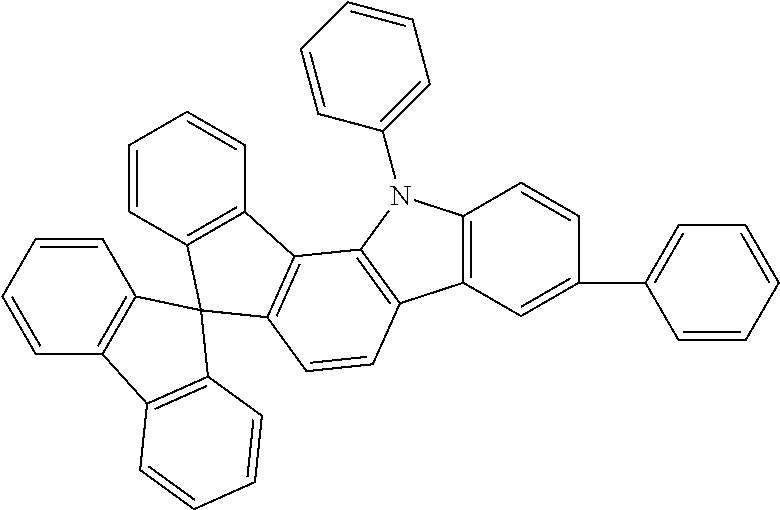
C00018

C00019

C00020

C00021

C00022

C00023

C00024

C00025

C00026

C00027

C00028

C00029

C00030

C00031

C00032

C00033

C00034

C00035

C00036

C00037

C00038

C00039

C00040

C00041

C00042

C00043

C00044

C00045
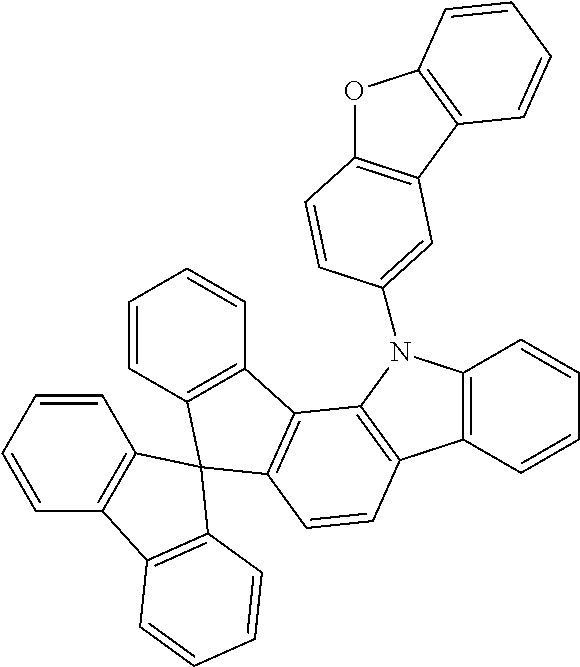
C00046

C00047

C00048

C00049

C00050

C00051

C00052

C00053
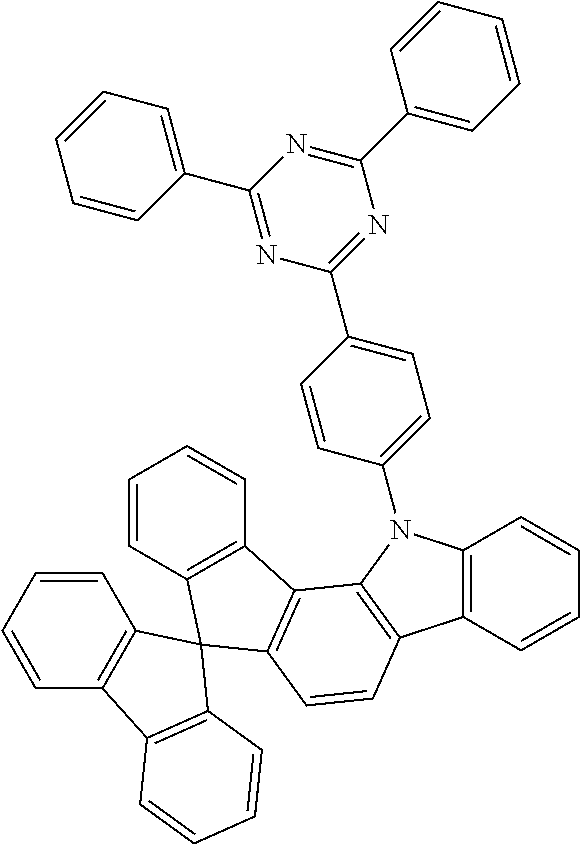
C00054

C00055

C00056

C00057

C00058

C00059

C00060

C00061

C00062

C00063

C00064

C00065

C00066

C00067

C00068

C00069

C00070

C00071

C00072

C00073

C00074

C00075

C00076

C00077

C00078

C00079

C00080

C00081

C00082

C00083

C00084

C00085

C00086

C00087

C00088

C00089

C00090

C00091

C00092

C00093

C00094

C00095

C00096

C00097

C00098

C00099

C00100

C00101

C00102

C00103
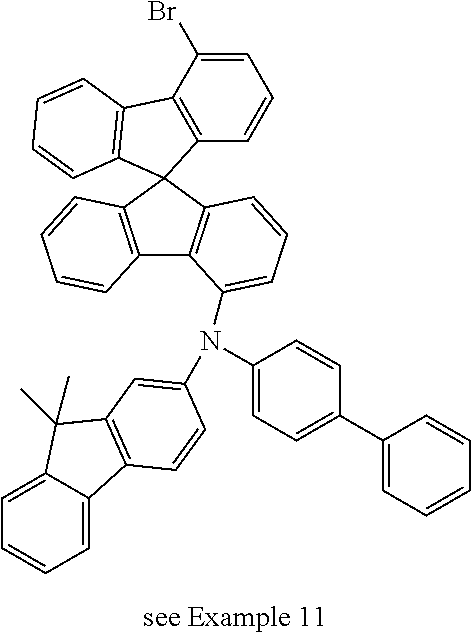
C00104

C00105

C00106

C00107
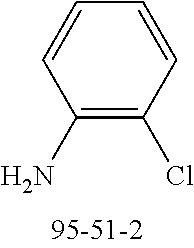
C00108

C00109

C00110

C00111

C00112

C00113

C00114

C00115

C00116

C00117
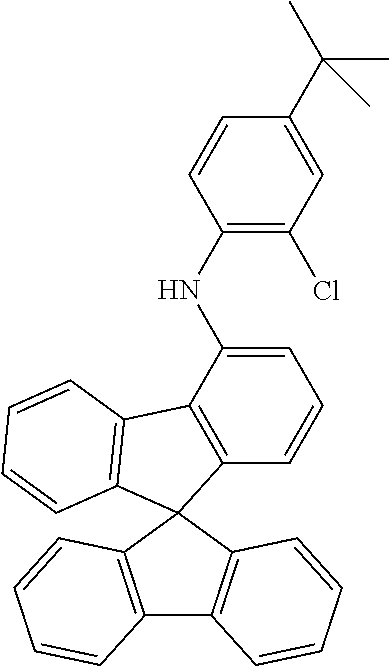
C00118

C00119

C00120

C00121

C00122

C00123

C00124

C00125

C00126

C00127

C00128

C00129

C00130

C00131

C00132

C00133

C00134

C00135

C00136
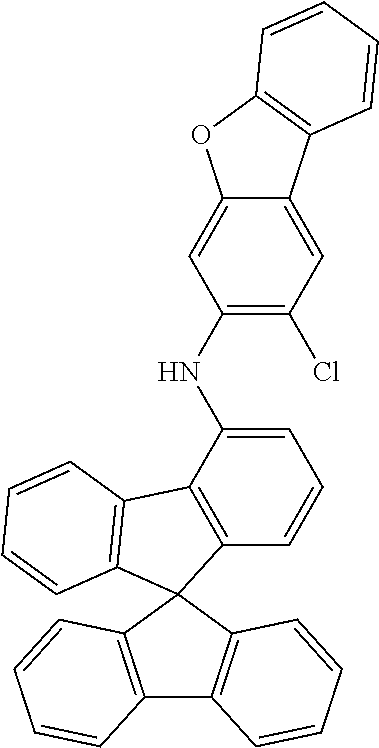
C00137

C00138

C00139

C00140

C00141
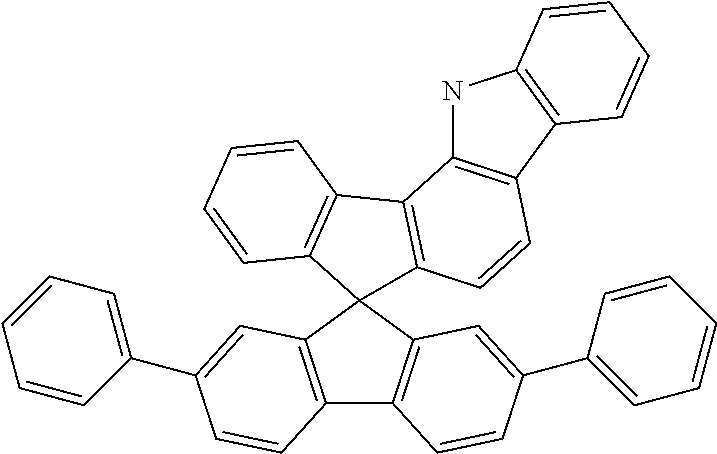
C00142

C00143
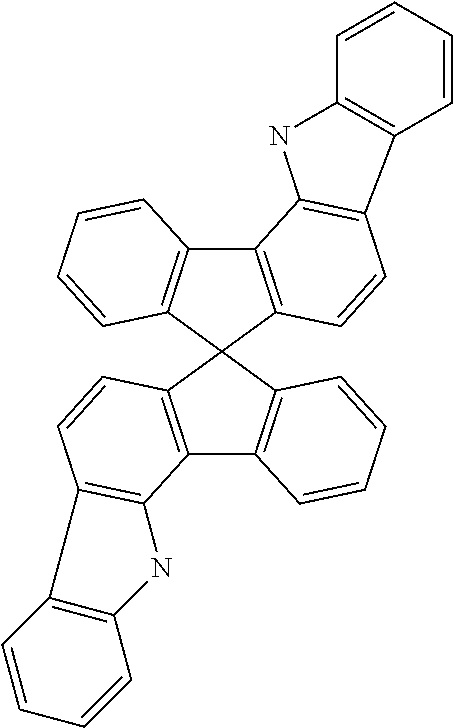
C00144

C00145

C00146

C00147

C00148

C00149

C00150

C00151

C00152

C00153

C00154

C00155
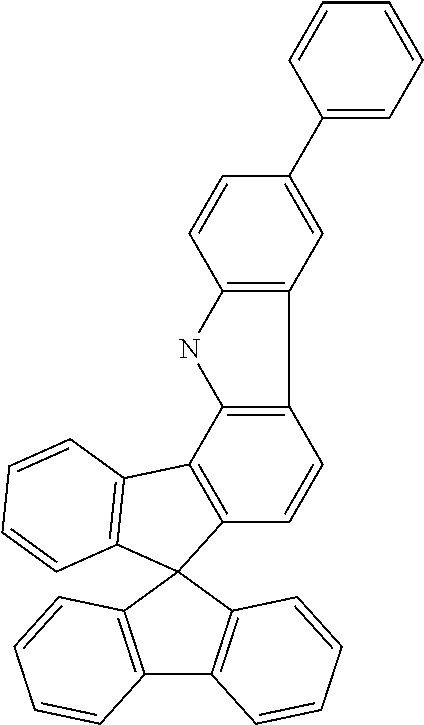
C00156

C00157
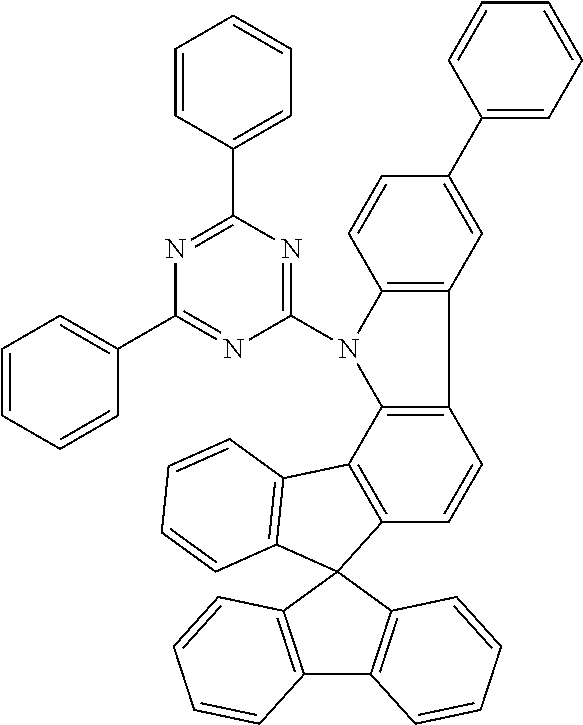
C00158

C00159

C00160

C00161

C00162

C00163

C00164

C00165

C00166

C00167

C00168

C00169
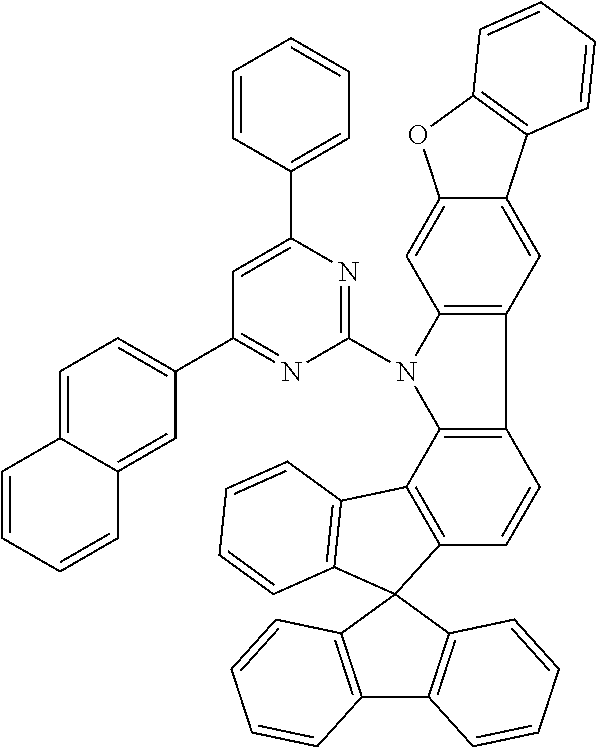
C00170

C00171

C00172

C00173

C00174

C00175

C00176

C00177

C00178
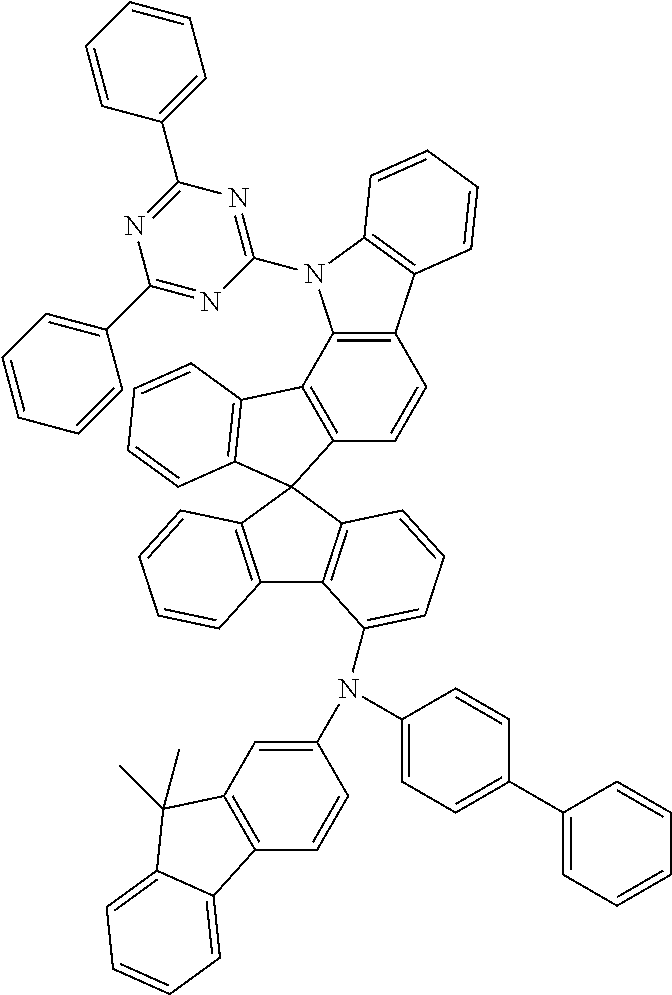
C00179

C00180

C00181

C00182

C00183

C00184

C00185

C00186

C00187

C00188

C00189

C00190

C00191

C00192
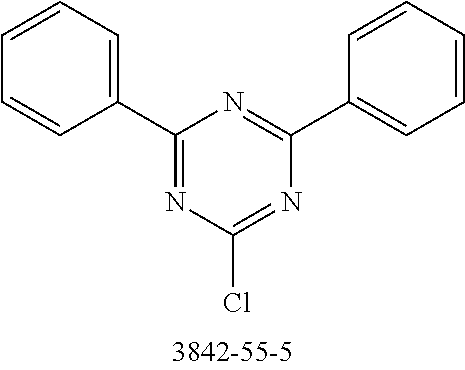
C00193

C00194

C00195

C00196

C00197

C00198

C00199

C00200

C00201

C00202

C00203

C00204

C00205

C00206

C00207

C00208

C00209

C00210

C00211

C00212

C00213

C00214

C00215
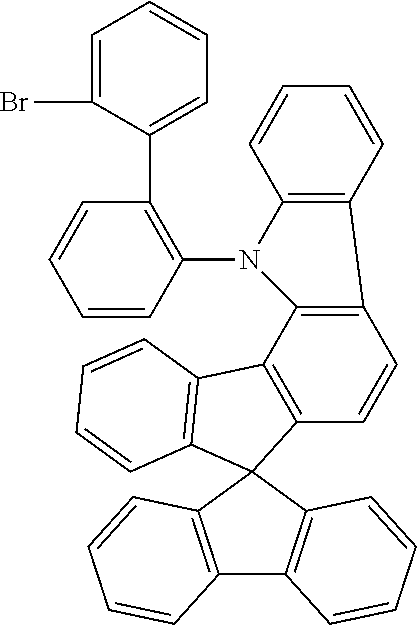
C00216

C00217

C00218

C00219

C00220

C00221

C00222

C00223

C00224

C00225

C00226

C00227

C00228
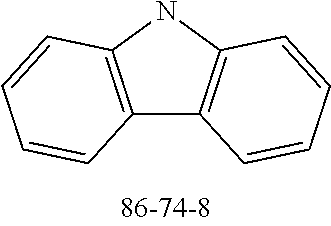
C00229

C00230

C00231

C00232

C00233

C00234

C00235

C00236

C00237

C00238

C00239

C00240

C00241

C00242

C00243

C00244

C00245

C00246

C00247

C00248

C00249

C00250

C00251

C00252

C00253

C00254

C00255

C00256

C00257

C00258

C00259

C00260

C00261

C00262

C00263

C00264

C00265

C00266

C00267

C00268

C00269

C00270

C00271

C00272

C00273

C00274

C00275

C00276

C00277

C00278

C00279

C00280

C00281
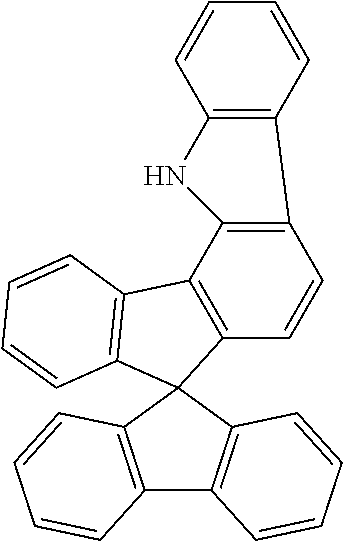
C00282

C00283

C00284

C00285

C00286

C00287

C00288

C00289

C00290
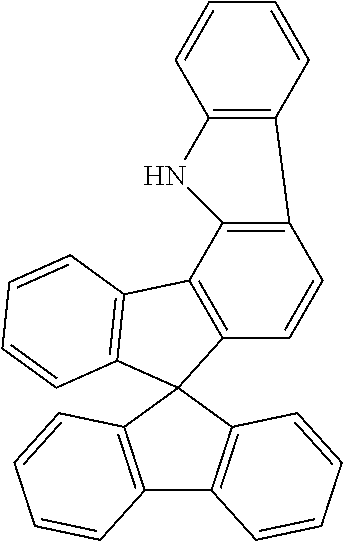
C00291

C00292

C00293

C00294

C00295
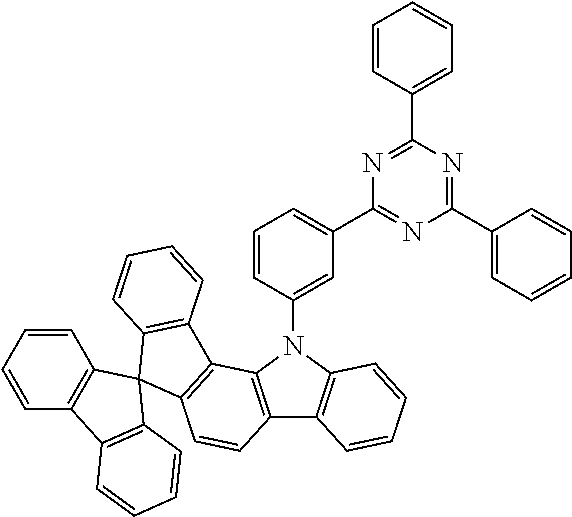
C00296
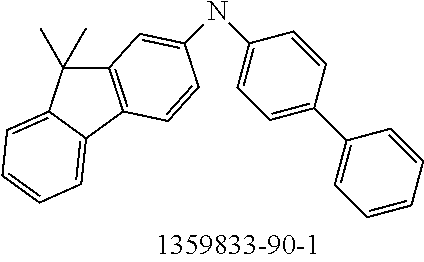
C00297

C00298

C00299

C00300

C00301

C00302

C00303

C00304

C00305

C00306

C00307

C00308

C00309

C00310

C00311
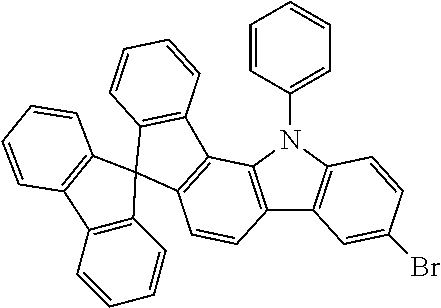
C00312

C00313

C00314

C00315

C00316

C00317

C00318

C00319

C00320

C00321

C00322
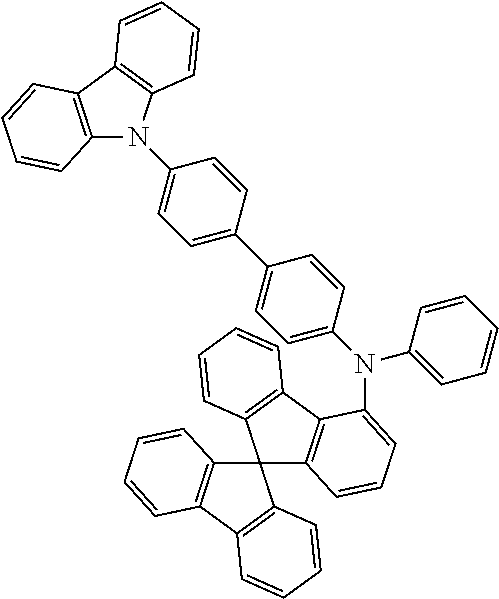
C00323

C00324

C00325

C00326

C00327

C00328

C00329

C00330

C00331

C00332

C00333

C00334

C00335

C00336

C00337
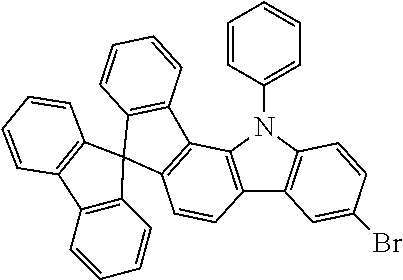
C00338

C00339

C00340

C00341

C00342

C00343

C00344

C00345

C00346

C00347

C00348

C00349

C00350

C00351

C00352

C00353

C00354

C00355

C00356

C00357
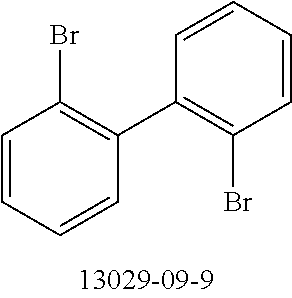
C00358

C00359

C00360

C00361

C00362

C00363
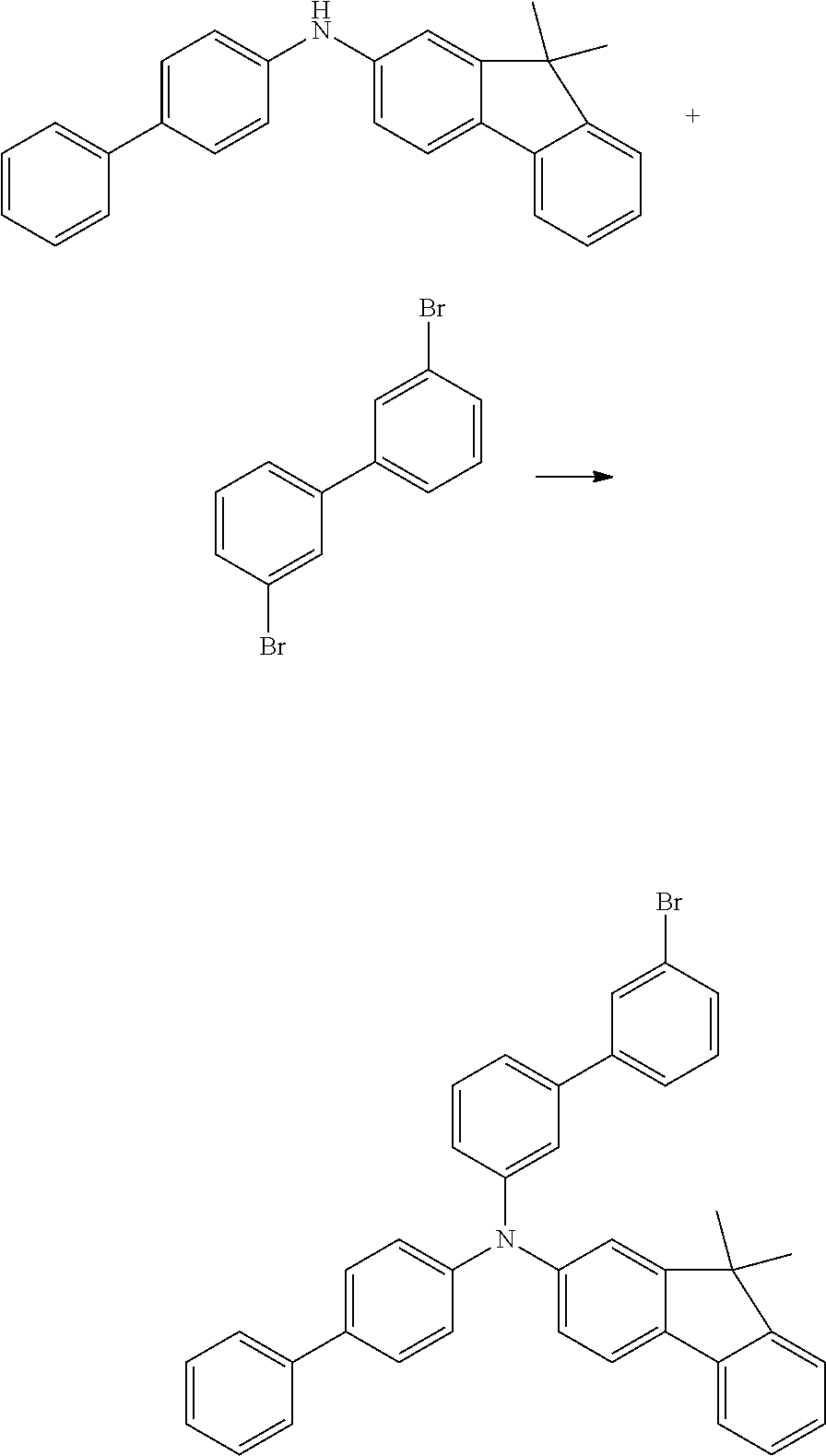
C00364
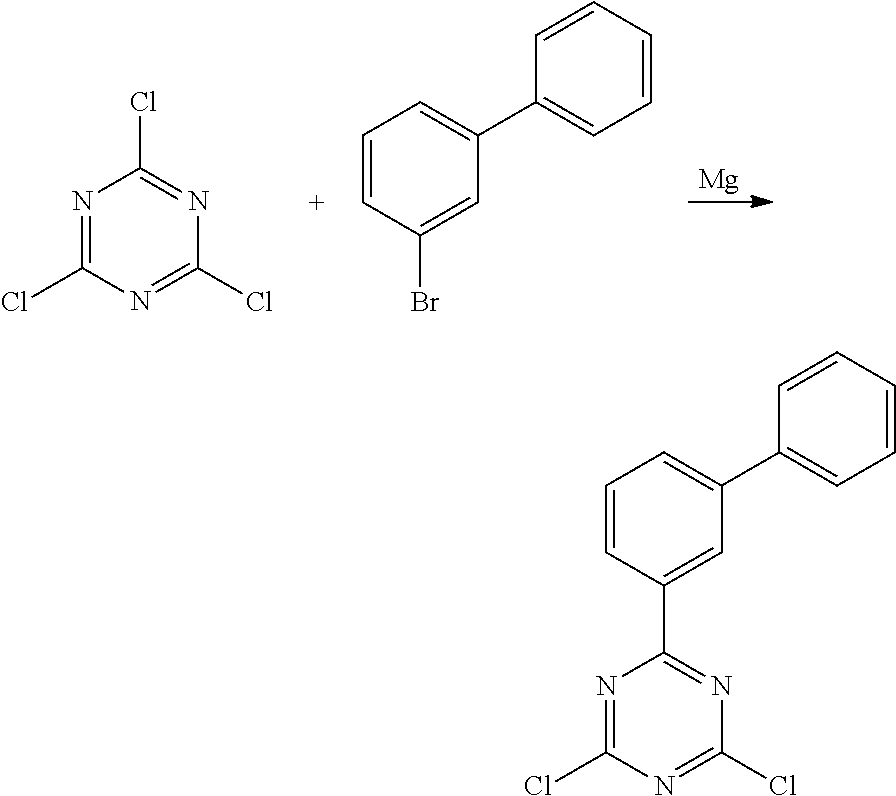
C00365

C00366

C00367

C00368

C00369

C00370

C00371

C00372

C00373

C00374

C00375

C00376

C00377
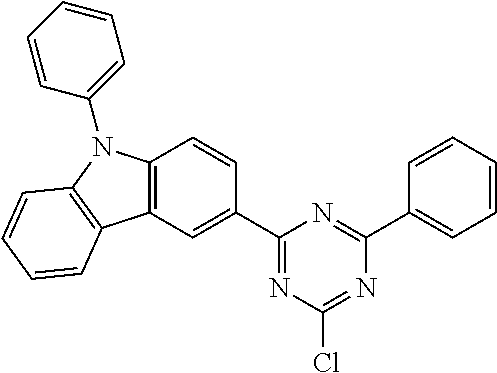
C00378

C00379

C00380
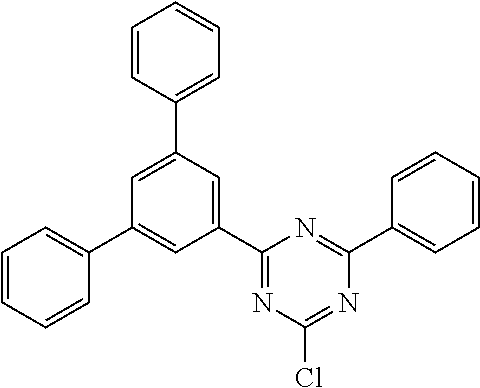
C00381

C00382

C00383

C00384

C00385

C00386

C00387

C00388

C00389

C00390
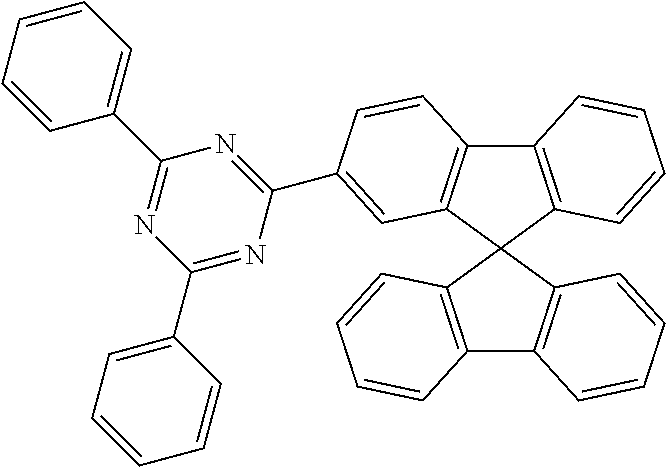
C00391

C00392

C00393

C00394

C00395
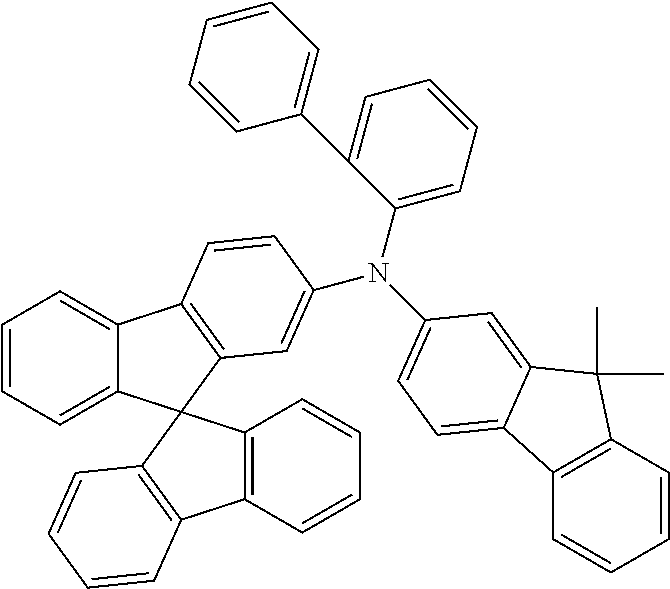
C00396

C00397

C00398

C00399

C00400

C00401
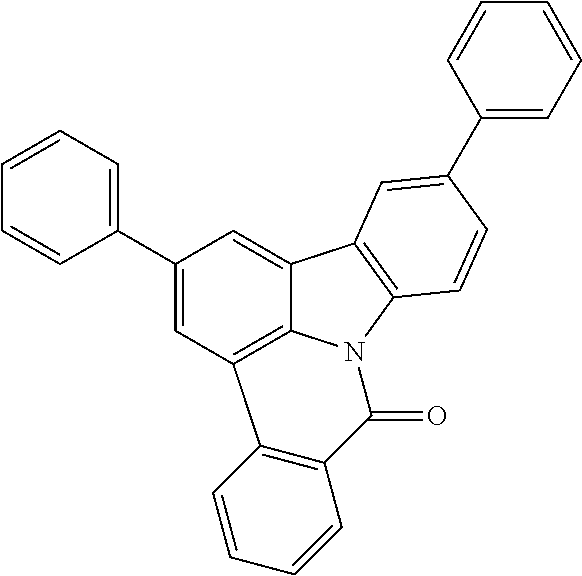
C00402

C00403
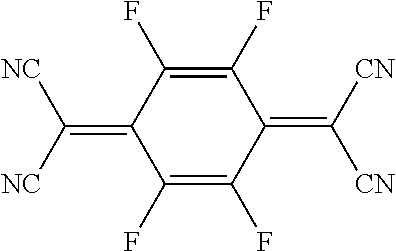
C00404
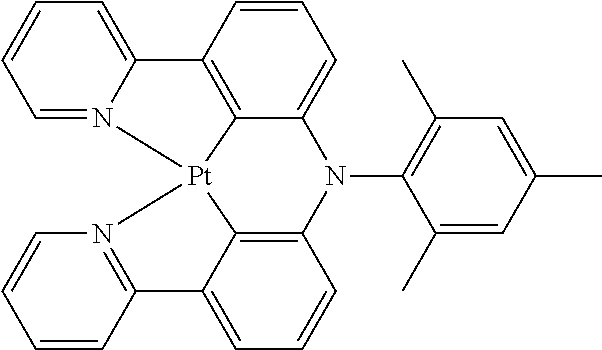
C00405

C00406

C00407

C00408

C00409

C00410

C00411

C00412

C00413

C00414

C00415

C00416

C00417

C00418

C00419

C00420

C00421

C00422

C00423

C00424

C00425

C00426

XML
uspto.report is an independent third-party trademark research tool that is not affiliated, endorsed, or sponsored by the United States Patent and Trademark Office (USPTO) or any other governmental organization. The information provided by uspto.report is based on publicly available data at the time of writing and is intended for informational purposes only.
While we strive to provide accurate and up-to-date information, we do not guarantee the accuracy, completeness, reliability, or suitability of the information displayed on this site. The use of this site is at your own risk. Any reliance you place on such information is therefore strictly at your own risk.
All official trademark data, including owner information, should be verified by visiting the official USPTO website at www.uspto.gov. This site is not intended to replace professional legal advice and should not be used as a substitute for consulting with a legal professional who is knowledgeable about trademark law.